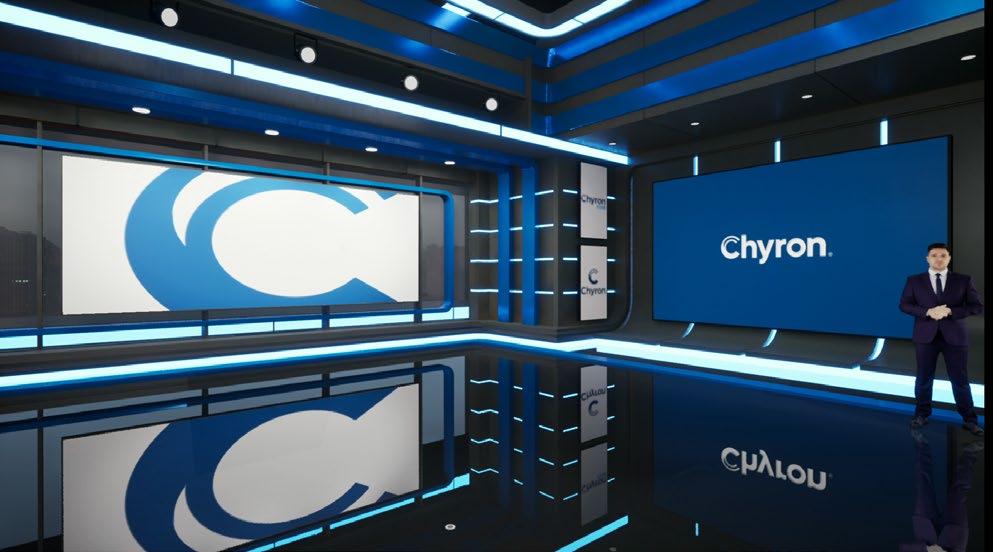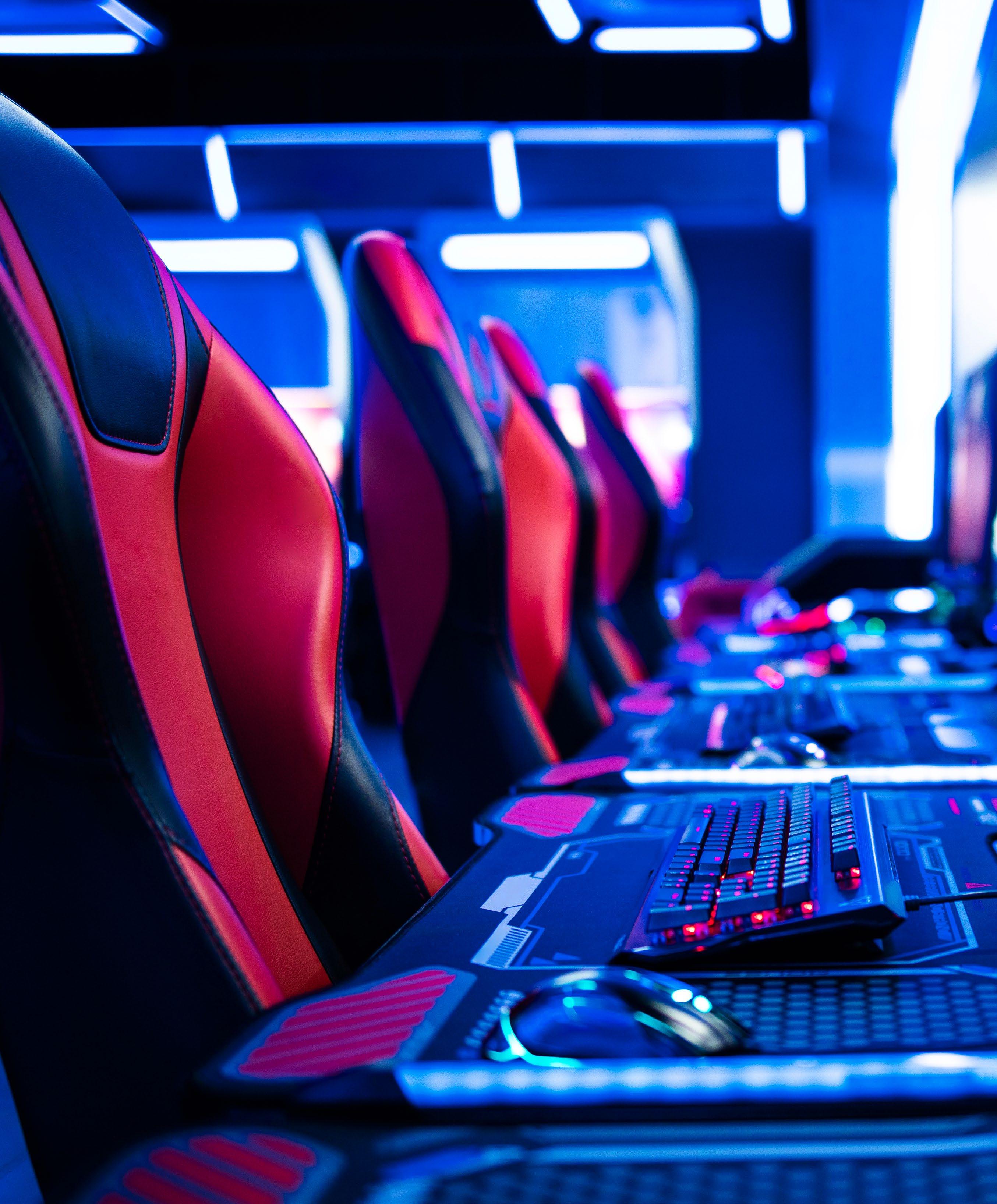

IN THIS ISSUE
Editor’s Note
Cindy Davis is completely jazzed about the Esports & Education Virtual Conference that took place on December 14, 2022, and provides a link for you to view it on demand.
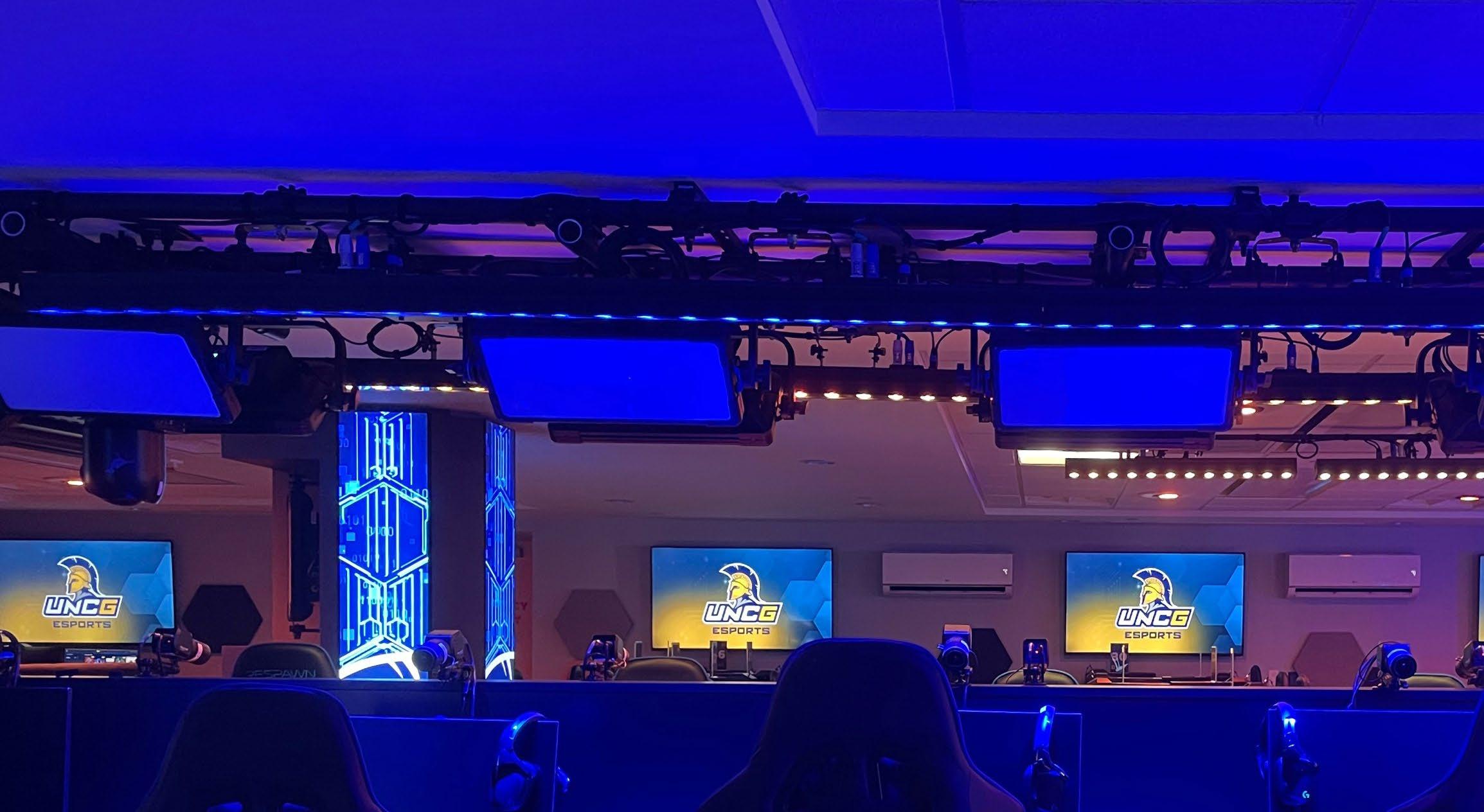
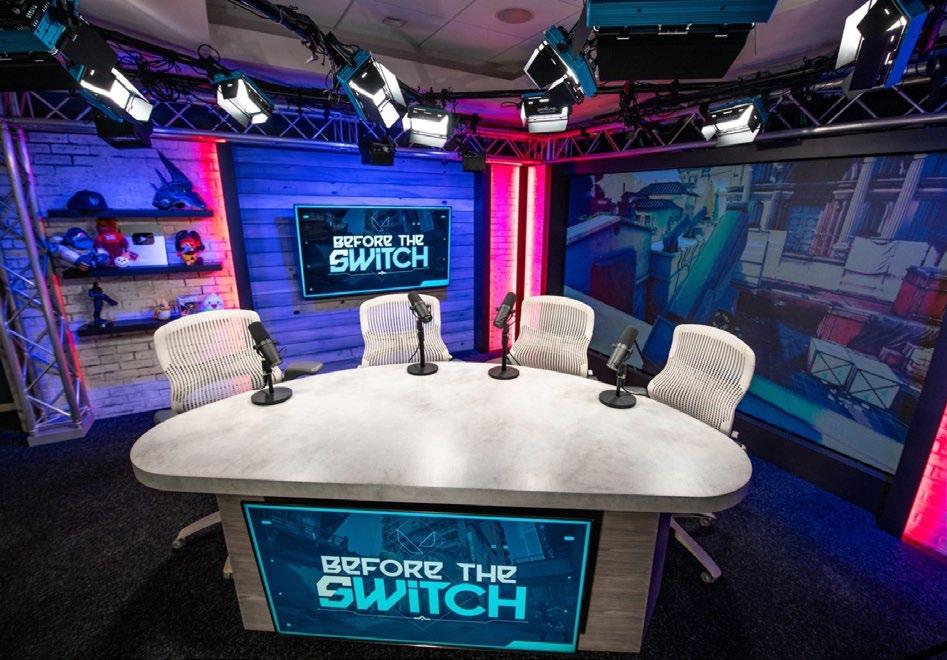
AV/IT Teams
Expansion into the realm of collegiate esports offers one university campus community a hub for competition, education, and recreation. | Advanced gaming monitors provide learning advantages—and a competitive edge—to students at an urban enrichment center.
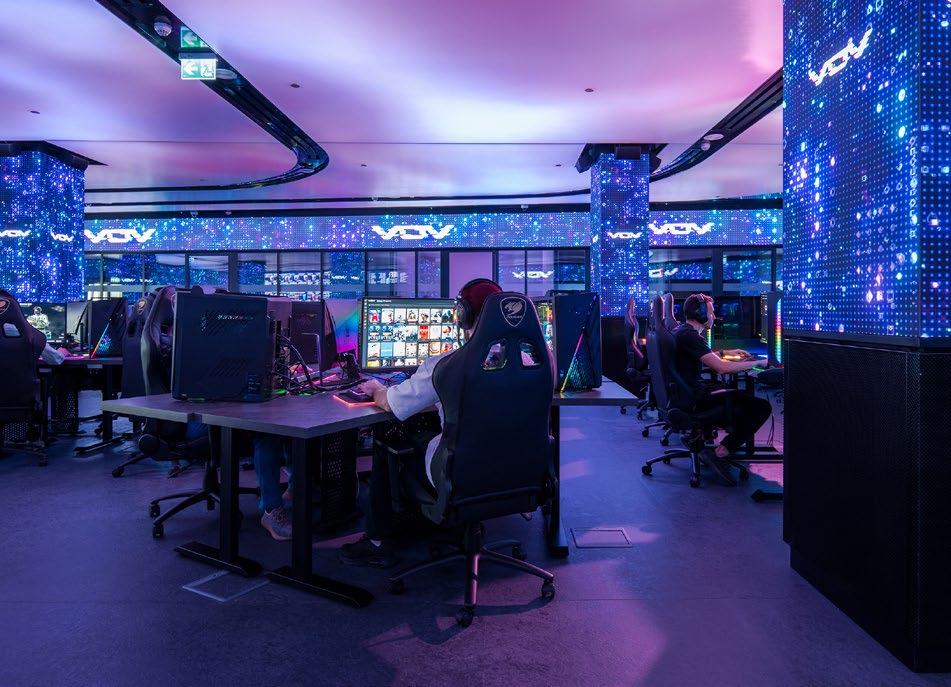
Thought Leaders
Case-in-Point
Products That Matter

FOLLOW
twitter.com/AVTechnologyMag
CONTENT
VP/Content Creation Anthony Savona
Brand and Content Director Cindy Davis, cindy.davis@futurenet.com
Contributing Writer, Macy O’Hearn
Managing Design Director Nicole Cobban
Design Director Sam Richwood
Production Managers Heather Tatrow, Nicole Schilling
ADVERTISING SALES
VP/Market Expert, AV/Consumer Electronics & Pro Audio Adam Goldstein, adam.goldstein@futurenet.com, 212-378-0465
Janis Crowley, janis.crowley@futurenet.com, 845-414-6791
Debbie Rosenthal, debbie.rosenthal@futurenet.com, 212-378-0473
Zahra Majma, zahra.majma@futurenet.com, 845-678-3752
SUBSCRIBER CUSTOMER SERVICE
To subscribe to AV Technology or Future’s other AV industry brands, go to https://www.smartbrief.com/subscribe

LICENSING/REPRINTS/PERMISSIONS

AVTechnology is available for licensing. Contact the Licensing team to discuss partnership opportunities. licensing@futurenet.com
MANAGEMENT
Senior Vice President Group, B2B Elizabeth Deeming CRO, B2B, Walt Phillips Vice President, B2B Tech Group Carmel King Vice President, Sales, B2B Tech Group Adam Goldstein Head of Production US & UK Mark Constance Head of Design Rodney Dive
FUTURE US, INC. 130 West 42nd Street, 7th Floor New York NY 10036
EDITOR’S NOTE
ESPORTS, 2023 AND BEYOND
by Cindy DavisON DECEMBER 14, 2022 more than 1,000 attendees registered to attend the Esports & Education Virtual Conference, which was hosted by AV Technology and Systems Contractor News and event partners National Association of Collegiate Esports (NACE) and North America Scholastic Esports Federation (NASEF). The event brought together more than 20 experts from a range of esports disciplines to discuss how to start or expand an esports program, shared challenges, successes, and wins, integrating esports into the curriculum, and everything in between.
Ashley “AJ” Jones, director of Membership Sales and Services at NACE delivered the opening keynote, 2023 and Beyond: The Future of Esports in Higher Education. Jones stated that NACE Starleague saw a 21 percent growth across 13 game titles, representing 12,824 players, 3,974 teams, and 650 schools. Up from 125 varsity programs in 2019, NACE predicts that in 2023 there will be more than 250 varsity teams.
Interest in esports appears to be on a hockey stick trajectory. According to 2021 data published by the NCAA, which states that men’s and women’s esports participation has eclipsed that of men’s and women’s hockey. Jones noted that inquires to NACE from NCAA Division I schools is increasing.
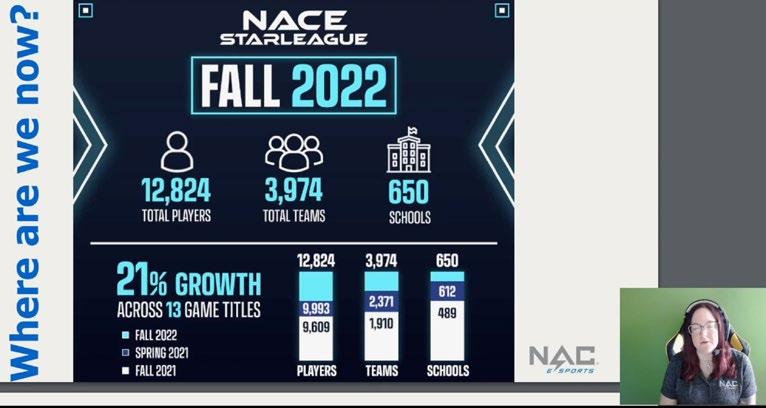
NACE gives club teams the opportunity to compete in its NACE Starleague, and some win the overall championship. “Once the administration realizes that they have a championship team on their campus, and it’s not a program that’s formalized under the varsity program, that’s when the institutions really start to jump in and recognize the importance to the students and the significance and impact that it can really have for their own institution,” Jones said.
With the higher education enrollment cliff on the minds of every institution, esports is quickly becoming a recruiting tool, with some offering scholarships to promising esports athletes.
Equally important is student retention. “One of best indicators in terms of student retention is that 80 percent of the students involved within your varsity collegiate esports program are not involved in anything else on campus,” Jones said. “If esports wasn’t a part of the equation, those students may choose another institution over yours.”
ON DEMAND
If you missed the Esports & Education Virtual Conference, and want to listen to AJ’s keynote or any of the below sessions, it is available on demand through January 14, 2023.

> Leveling Up
> A Level Playing Field: The World of University Esports
> How to Leverage Your Community Cinema to Host Esports Events
> Anatomy of an Esports Program: Planning, Infrastructure, Software, Hardware to Streaming
> Authentic SEL Through Esports
> Codifying K-12 Esports Programs
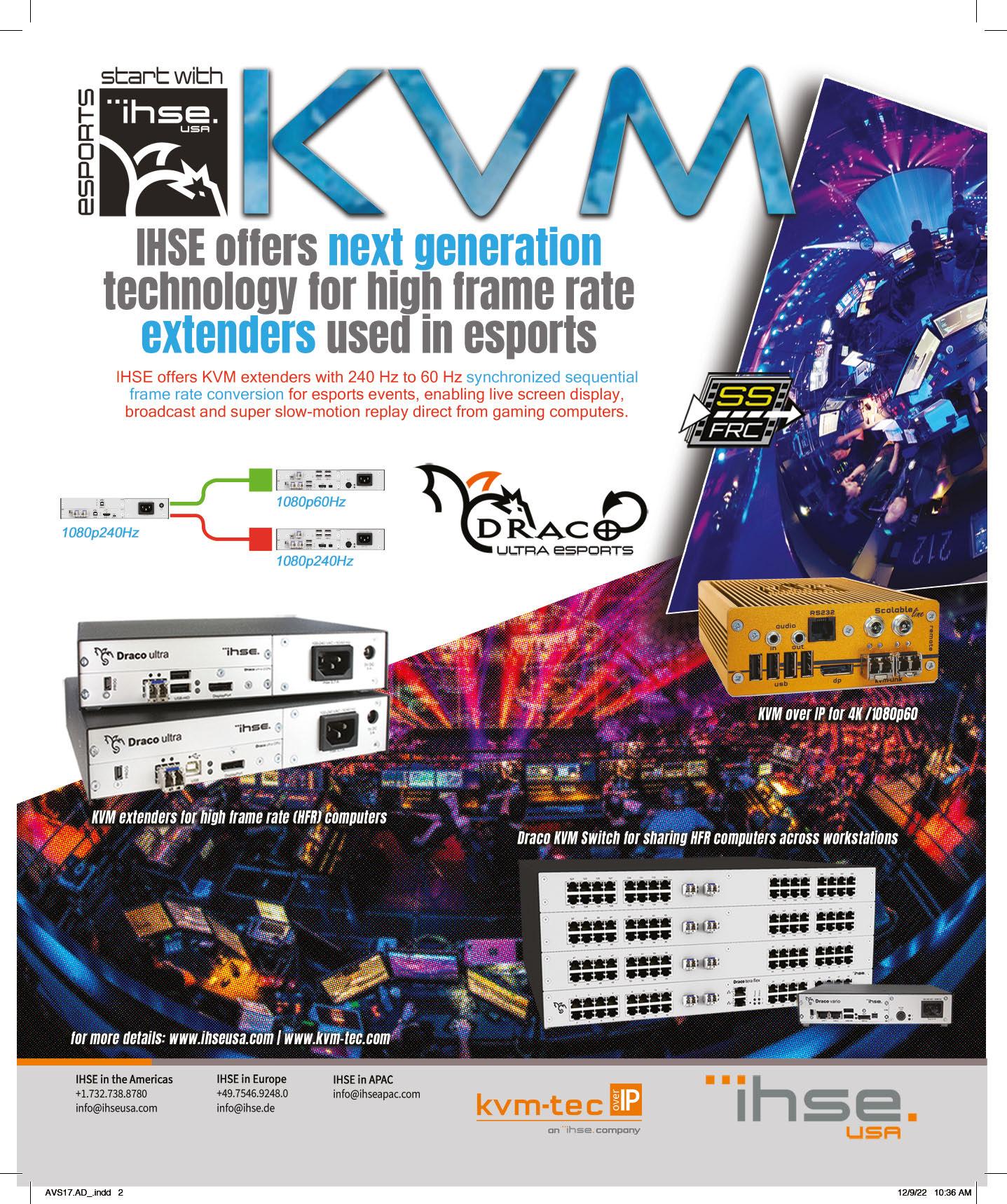
AV/IT TEAM
A Multi-Player Esports Arena
Expansion into the realm of collegiate esports offers one university campus community a hub for competition, education, and recreation.
By AV Technology StaffA control screen allows staff in the new 3,300-square-foot facility at UNCG to manually adjust the lighting, depending on how the space is being used.
The University of North Carolina Greensboro (UNCG) is a public university with more than 17,000 undergraduate and graduate students. As the most diverse campus in the NC state system, UNCG inspires its students to begin their path toward a bright future, offering over 67 majors and holding student success as a top priority.
Prior to the pandemic, there was an internal charge to bring esports to campus led by UNCG chancellor Dr. Franklin D. Gilliam Jr., who sat on an advisory committee for the NCAA. Learning about the League of Legends World Championship in this advisory capacity helped him understand the positive impact esports could have on the UNCG community.
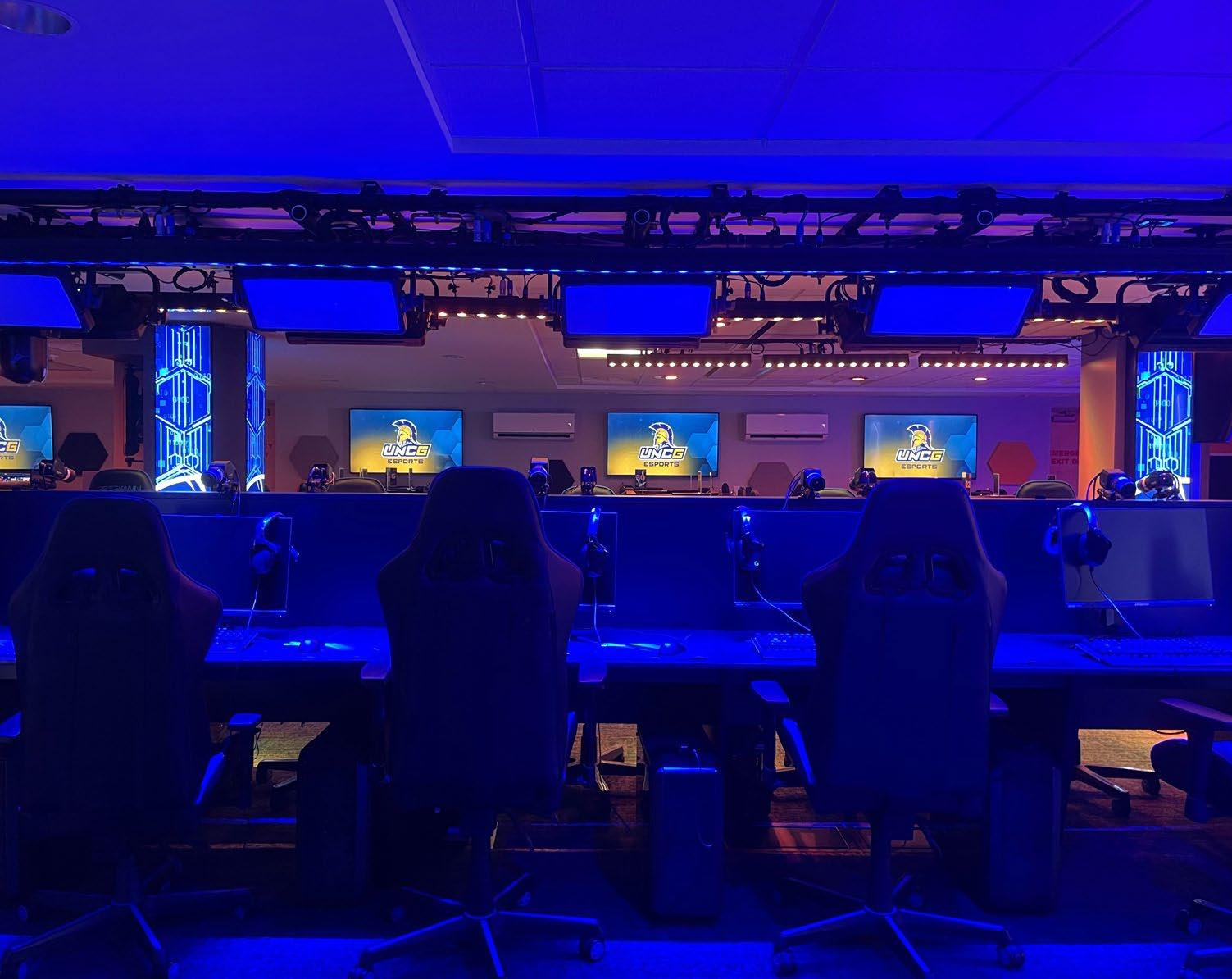
Associate vice chancellor for Learning Technology and Customer Success Todd Sutton and his team soon began planning for a truly multi-functional space—one that could both host competitive esports events and offer a venue for students to gather and play video games recreationally.
Sutton also recognized early on the potential of an esports arena that could function as a learning lab for faculty to integrate gaming into their curricula. “We wanted the UNCG esports arena to be used as an educational space for our communications programs, specifically with the addition of the broadcast booth, and any other academic programs that could benefit from taking advantage of the technology,” he explained.
LAYING THE GROUNDWORK
The UNCG team partnered with Horizon AVL and Esports Integration to help design and implement an infrastructure that would drive the success of the esports arena. Horizon AVL’s philosophy when approaching technology design is to consider competition, curriculum, and community to support students in every aspect, including the opportunity to pursue a career in esports. To help meet these goals, UNCG and Horizon AVL selected Crestron DM NVX AV-over-IP technology as the backbone.
For Larry Darling, UNCG’s Classroom Technology manager, the Crestron solution was an ideal fit for the new multipurpose facility. “We use Crestron to take care of all the controls and the video routing throughout the space. DM NVX met the flexibility and reliability that we
required,” he said.
Joshua Kell, chief executive officer, Horizon AVL and Esports Integration echoed this sentiment. “The flexibility, reliability, and ease of use is why my team decided to install DM NVX technology in the UNCG esports center,” he said.
A CAMPUS-WIDE SUCCESS

The UNCG Esports Arena is 3,300 square feet consisting of 48 gaming PCs, three gaming console bays, and a VR Oculus Rift headset. Crestron DM NVX routes audio and video to create scenic elements in their game bases. The several game bays hold various consoles that can be plugged into the wall and displayed on the corresponding TV for each game bay, which is immediately routed with a Crestron DM NVX encoder. Crestron DM NVX was also introduced into the broadcast system to have full 4K broadcasting that converts the HDMI signal to
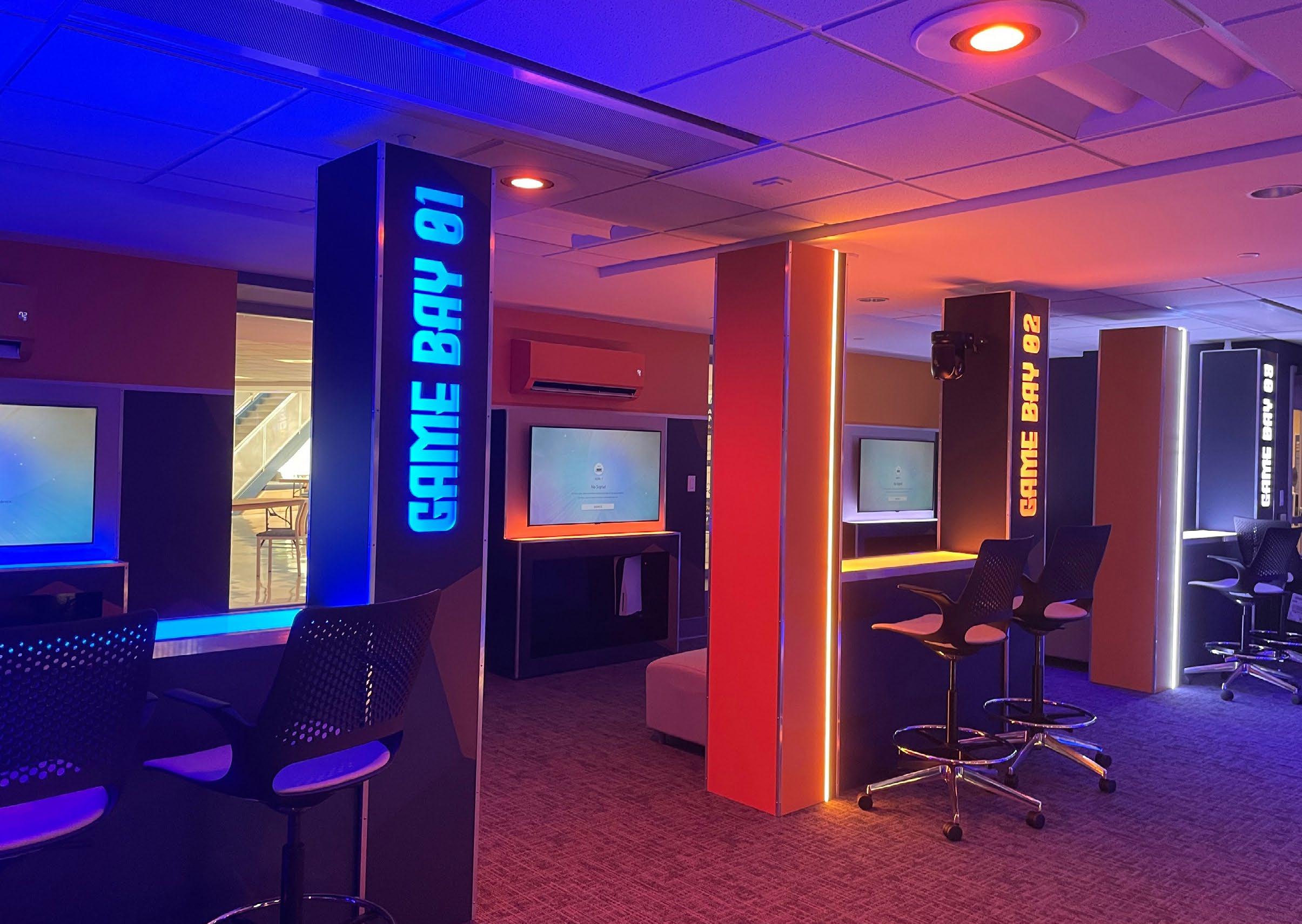 —Larry Darling, Manager of Classroom Technology University of North Carolina Greensboro
—Larry Darling, Manager of Classroom Technology University of North Carolina Greensboro
This setup allows all spectators to get in on the fun, even from the hallway."
SDI, so broadcasting and streaming can happen simultaneously with very low latency.
UNCG utilizes Crestron to control the widespread use of game lighting throughout the arena. Within each game base, LED lights reflect the game’s status. A Crestron control screen allows the staff to recall scenes or manually switch the lighting to host different events, or to celebrate a competition win. Outside the UNCG Esports Arena, there is an LED wall that can display live gaming streams or camera feeds that show the gamers in action. This setup allows all spectators to get in on the fun, even from the hallway. The commentators can also control these feeds from the broadcast booth and share different perspectives of the event.
While the esports arena was going to be a complex system, both Horizon AVL and UNCG knew Crestron solutions met the needs of
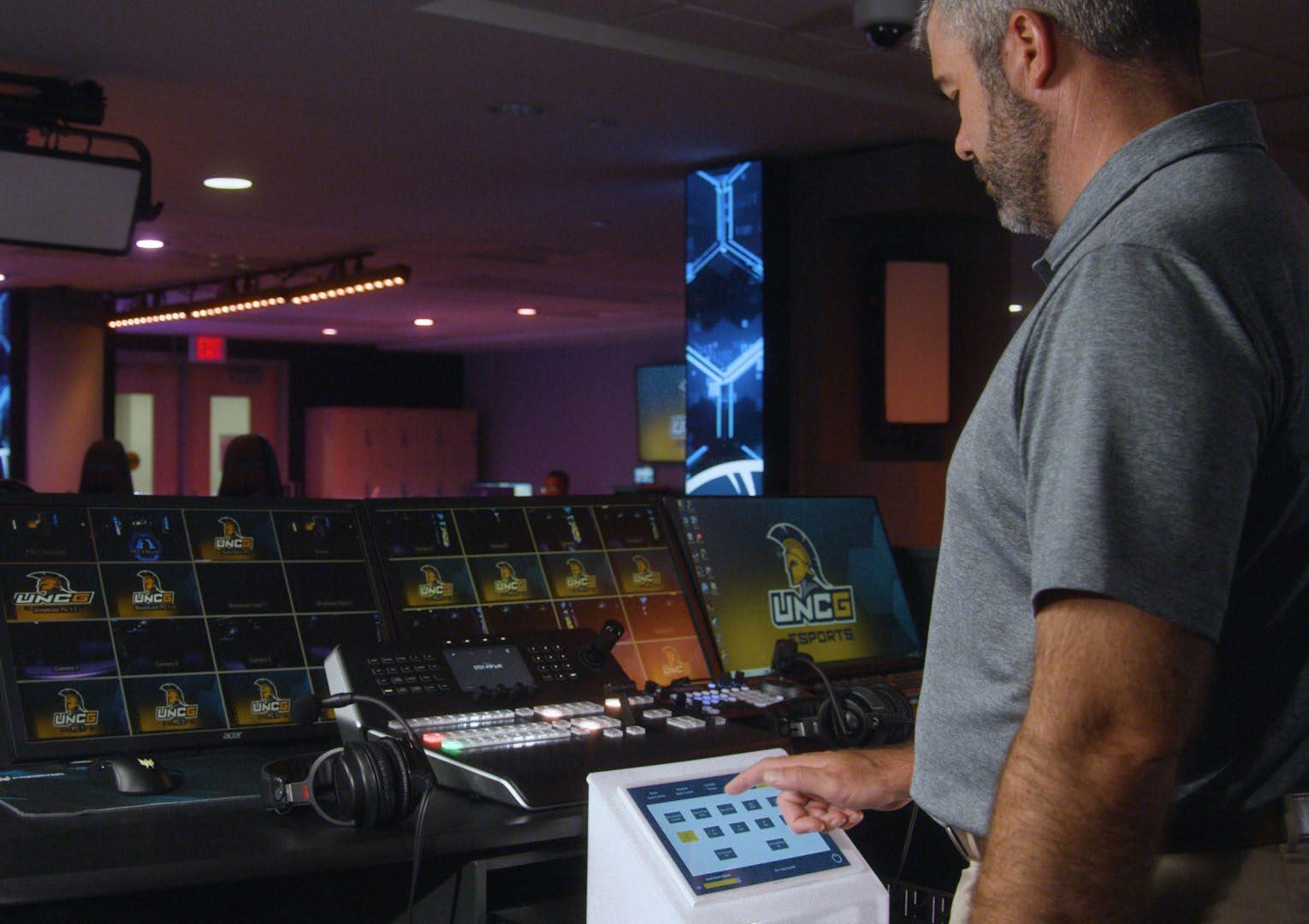
the space and could also be maintained and programmed by student staff members.
According to Darling, the DM NVX has been met with overwhelming approval beyond just the esports arena; UNCG is using Crestron technology throughout its campus. “Crestron DM NVX has become a favorite here at UNCG due to it being such a powerful and robust system,” he said.
UNEVENTFUL—IN A GOOD WAY
Ultimately, Crestron and Horizon AVL delivered a top-of-the-line solution for UNCG’s on-campus esports facility. After the completion of the project, the arena drew more than 2,200 students in its first week and continues to be a highlight on every campus tour.
Sutton concluded, “Working with Crestron equipment in the arena was uneventful in really the best way possible. We’re very pleased with the experience.”


AV/IT TEAM
Helping Youth Get Ahead of the Game
Advanced gaming monitors provide learning advantages— and a competitive edge—to students at an urban enrichment center.
By AV Technology StaffScholars Collective of Long Beach, California specializes in providing meaningful, STEAM-focused activities for youth scholars aged four to 14. Founded by Dr. Angela Macias, an educator with over 20 years in educational studies, the team at Scholars Collective provides a fun, safe afterschool space for exploration, classes, tutoring and access to state-of-the-art technology. An innovative program centered on providing affordable access to tech-focused enrichment, the center is open until 9pm—far later than most after-school programs.
In downtown Long Beach, parents and guardians whose kids attend area public schools often work multiple jobs, with no time or income to spare for costly commercial tutors. The local public schools have limited funds for after-school activities, and the downtown environment is adult-oriented, with few places
for kids to hang out after school. The divide here is a chasm, and, beyond smartphones, technology is rarely a part of students’ lives. This creates a distinct disadvantage in a world that relies on technology to run, where the highestpaying and most secure jobs require experience with tech.
“We do battle with the digital divide daily by providing learning opportunities that use stateof-the-art technology made available through the generous support of manufacturers like ViewSonic,” said Macias. “Most of what we offer is STEAM-focused, and gaming is a focal point of our mission.”
BRIDGING THE DIVIDE
The Collective’s learning space consists of a central room dubbed the Enrichment Center, the Stream Lab, and the JayzTwoCents Tech Lab. In the Enrichment Center, students use
The Scholars Collective not only provides much-needed access to technology for schoolwork, but it also helps foster social-emotional skill-building and an interest in STEAM career areas.

laptops and tablets for homework, research, and art projects. The Stream Lab provides a closed-door space for scholars to learn content creation and broadcasting, as well as to meet for private therapy and tutoring. Six ViewSonic VX2758-2KP-MHD 27-inch monitors provide expansive, crystal-clear viewing in these two areas. The Tech Lab is outfitted with 10 stateof-the-art gaming rigs equipped with ViewSonic ELITE XG271QG 27-inch 1440p 240Hz monitors. The “big kid room,” as it’s informally known, is the beating heart of the center, literally pulsing with excitement and vibrant LED lighting.
“Our approach to teaching with tech is to ease students into using more complicated technology, then into using it in a more sophisticated way,” said Macias. “Our scholars are often familiar with smartphones but may not know how to use a mouse or keyboard. In school students may be exposed to tech, but it’s often pretty mediocre, and, what’s more, usually the only ones touching it are the teachers. Students see it—they’re around it—but they’re not using it themselves.”
The highly trained team of instructors at Scholars Collective guides students through the use of basic computer skills, fostering learning (in all areas of the center) by asking questions, facilitating discovery, and promoting problem solving while nurturing a growth mindset. Many students are motivated through this process by the prospect of making it to the Tech Lab, where the LED-lit gaming rigs with sleek ViewSonic ELITE gaming monitors beckon.
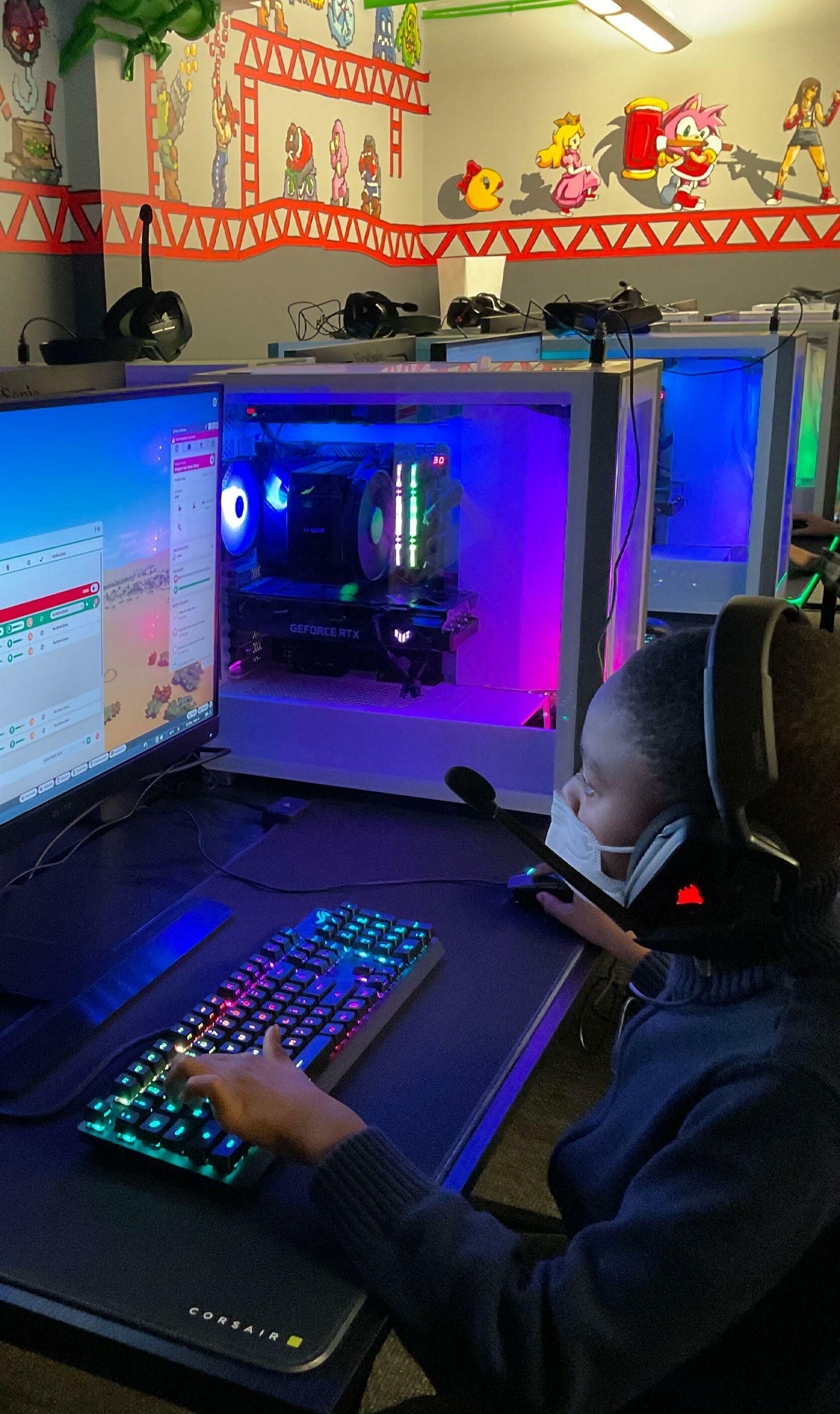
Instructor Sona Karun, a science education student at California State University, Long Beach considering a career in education, teaches the introduction to coding class at Scholars Collective, and has seen the benefits of step-wise, tech-focused learning first hand.
“It’s incredibly rewarding to see students grow in their skills and creativity as we go through the coding activities, which range from simple coding games to website creation and even Roblox studio coding,” said Karun. “The tech tools we’ve been provided, like the ViewSonic monitors, are critical to enabling us to provide these opportunities.”
After receiving lessons in basic computer skills from Collective staff, students are given access to the Tech Lab, which contains LED-lit gaming rigs with sleek ViewSonic ELITE gaming monitors.
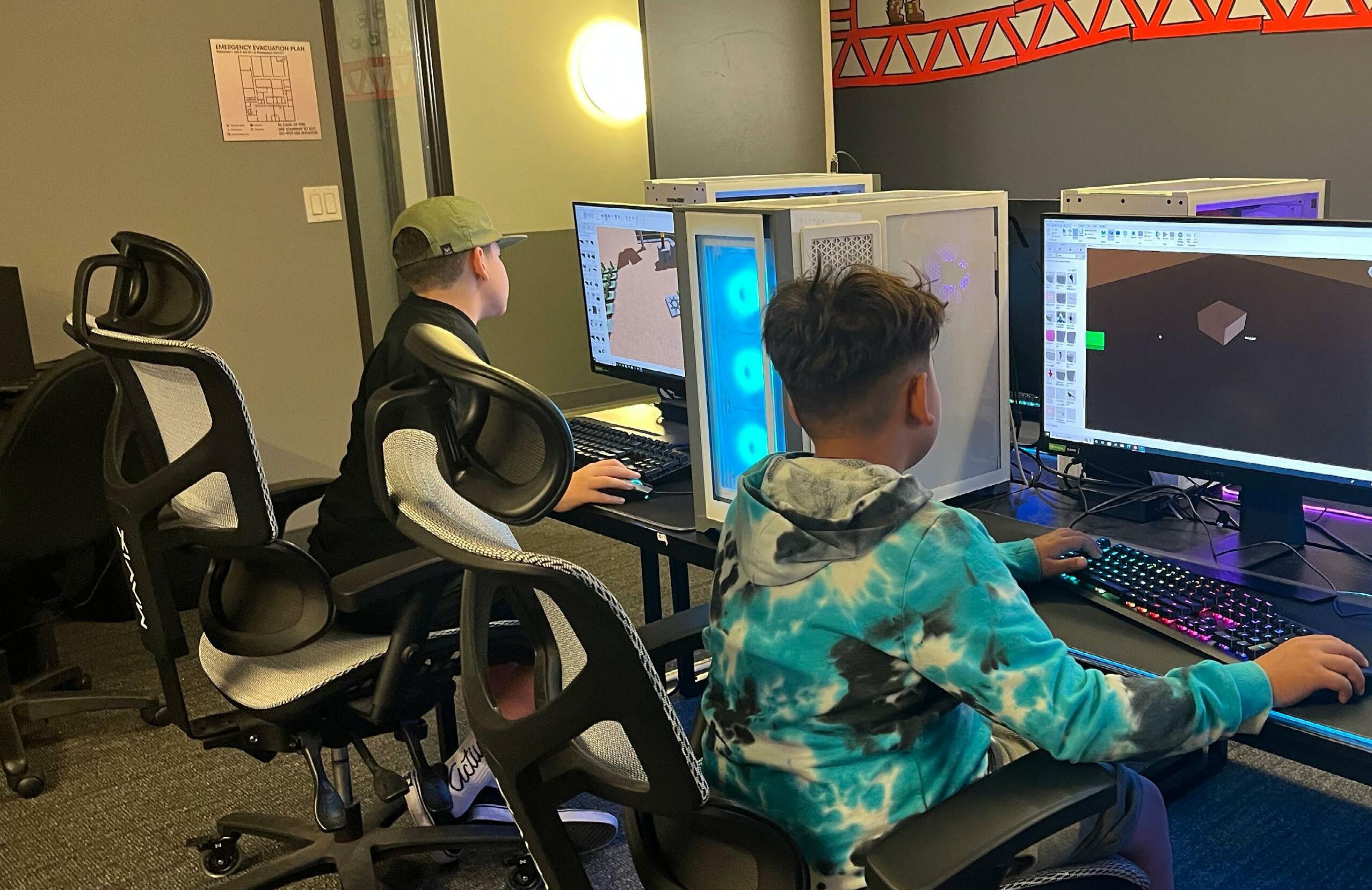
SKILL-BUILDING THROUGH ESPORTS
With a philosophy centered in constructivism, the Collective’s educators promote choice, curiosity, fun, and independence. “In school when students get to use tech it’s usually in a very prescriptive way,” said Macias. “We want them to be independent, to learn tech by choosing and exploring based on their interests, from graphic design, gaming, making videos, coding, or creating their own video games. It’s exciting to see them self-motivated by their inner creativity and autonomy.”
It’s no surprise that given the option, many of the Collective’s participants gravitate toward gaming. What may surprise some is the power of gaming to foster substantial and significant learning.
“There’s no better way to get students excited about technology than to tap into something they already love,” said Macias. “We believe that gaming is an ideal platform for
learning because, number one, it meets kids where they are and, number two, it provides a positive medium for the development of socialemotional skills.”
This, she said, is more critical than ever. “Teachers tell me that the 2021-2022 school year has been the hardest they’ve experienced in terms of behavior,” said Macias. “The transition back from remote learning has been really tough on kids of all ages. Almost all kids are less mature than expected because they missed out on so much classroom time. They’re playing catch up.”
Engagement through video games brings kids together in a unique way, said Macias. When kids game they’re speaking a common language. They develop a common etiquette around the activity. They practice teamwork. They learn positive communication and patience—for example when engaging with a less experienced player, which leads to
learning about how to mentor others.
“When kids game together, they’re covering a lot of social-emotional skillsets, all of which boils down to character building,” said Macias. “They’re also building critical skills like planning, problem solving, strategic thinking, and time management. Gaming requires a tremendous amount of cognitive engagement.”
A WINNING PARTNERSHIP
To extend the reach of these benefits to more students in the community, Scholars Collective has teamed up with the California State University, Dominguez Hills (CSUDH) esports team, which is similarly focused on the advantages gaming brings to youth and young adults. The catch, as both Macias and Ruben Caputo, founding (and former) CSUDH esports general manager know, can be parents wary of “too much screen time.”
“When people think about esports, they
think competition and they think about having fun. Parents can be concerned that it’s not a good use of their child’s time,” Caputo said. “But esports offers so much. Every season I had the great joy of seeing so many students build confidence and competencies through their participation in esports.”
At CSUDH, esports is viewed as a strategy not just an outcome—a strategy that creates opportunity through gaming for students to learn problem solving, strategic thinking, and collaboration, along with coding, event broadcasting, graphic design, marketing, and other activities related to the world of esports.

“The CSUDH esports program provides students with experiences they can readily translate into life skills and career opportunities,” Caputo said. “Scholars Collective is helping students begin this process of being engaged with tech and gaining the social-emotional and cognitive skills
at an earlier point in their lives.”
Through the blossoming partnership, students at Scholars Collective enjoy mentorship from the award-winning CSUDH esports Toros, who additionally help run periodic tournaments for the SCU community.
All of which, notes Macias, could not have been possible without the Collective’s sponsors, who provided the technology needed to bring this digital-divide-busting dream to life.
“Most of our kids don’t have access to tech like the ViewSonic monitors at home, and it’s easy to see how much they love using it here,” said Scholars Collective manager Edward Valdez. “The ViewSonic ELITE displays are perfect for coding and graphic design, and especially for providing a smooth gaming experience. The only ones not happy about it are the opponents, because our scholars keep winning matches!”
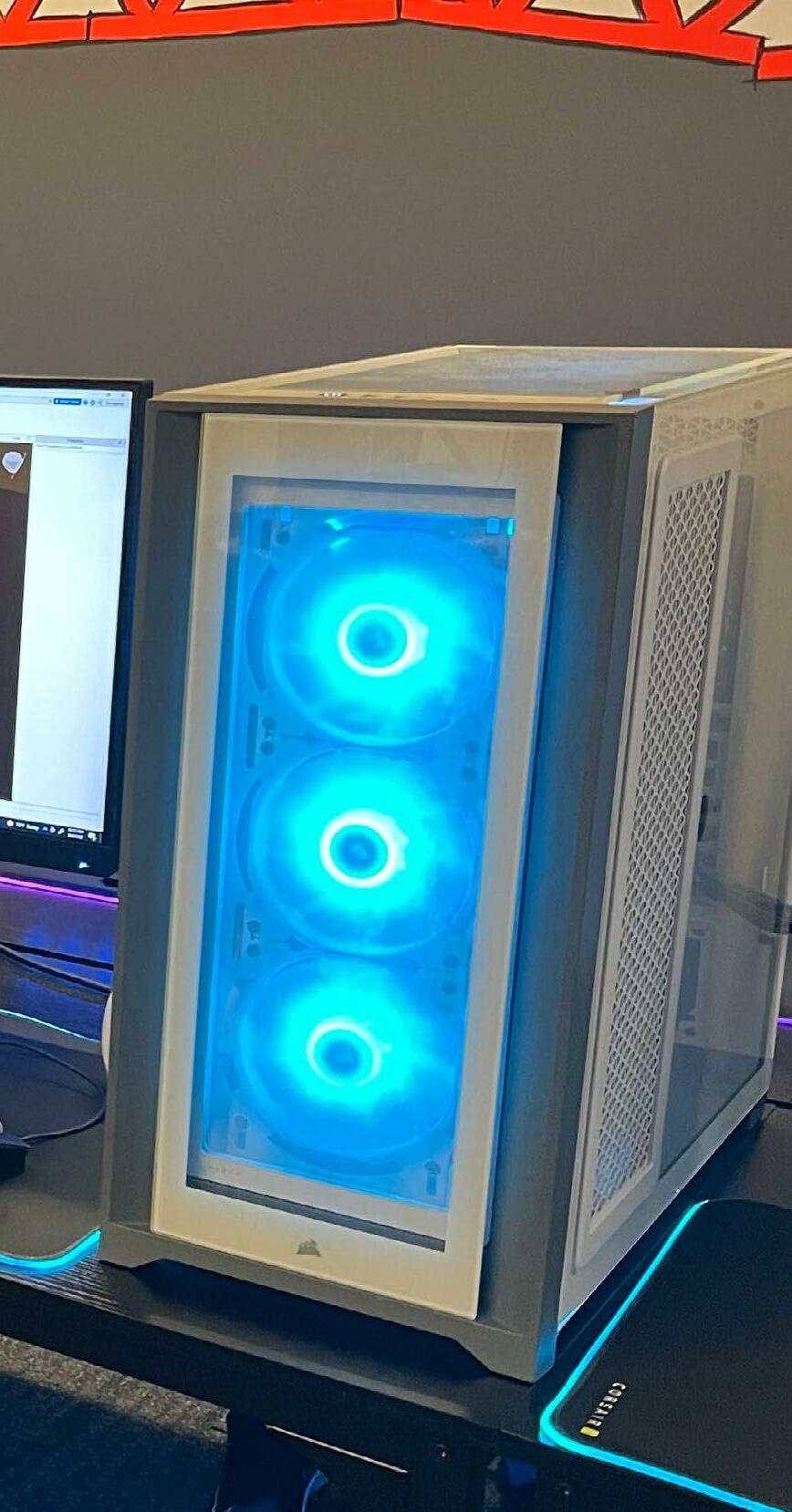
There’s no better way to get students excited about technology than to tap into something they already love.”
—Dr. Angela Macias, founder of Scholars Collective
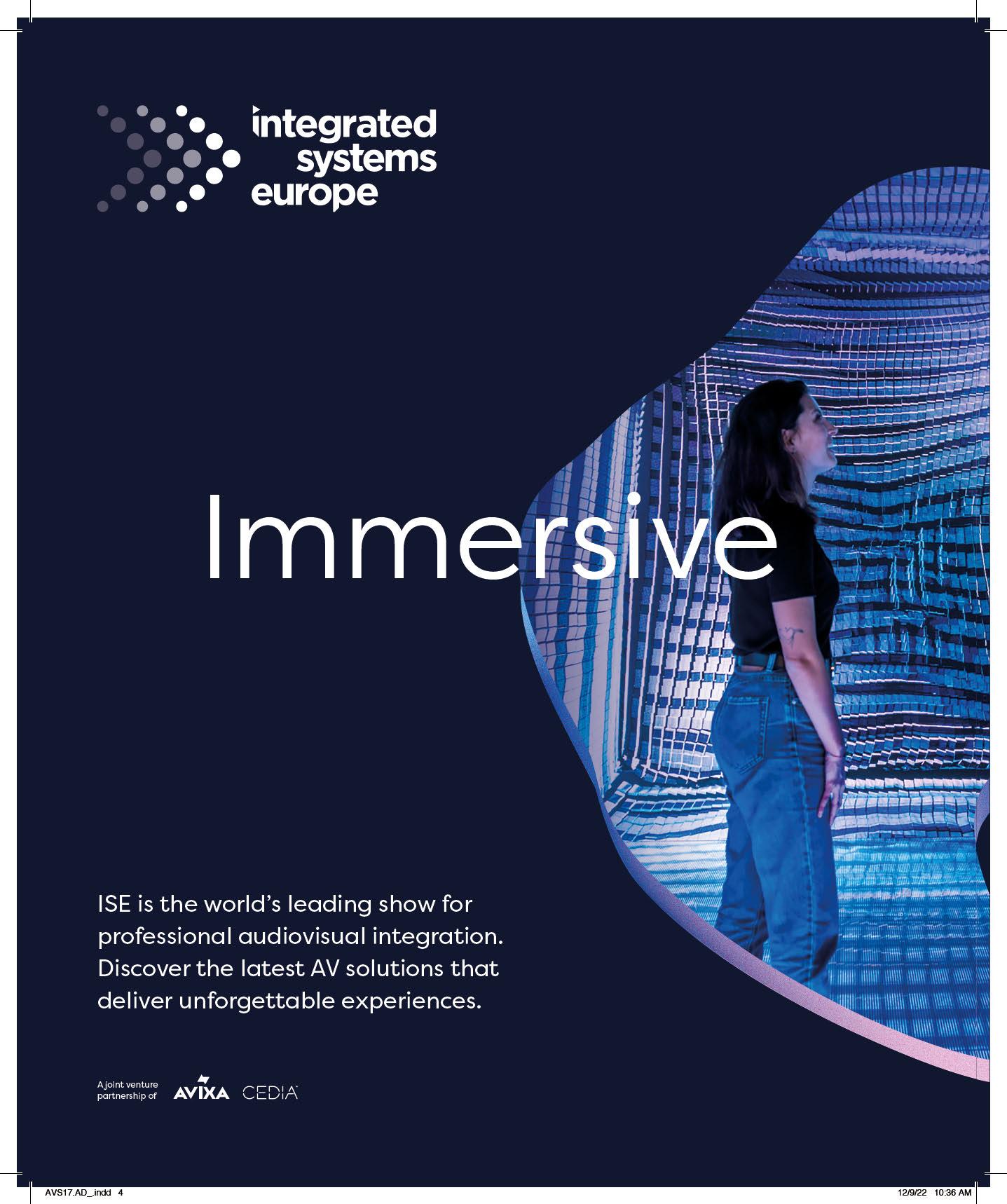
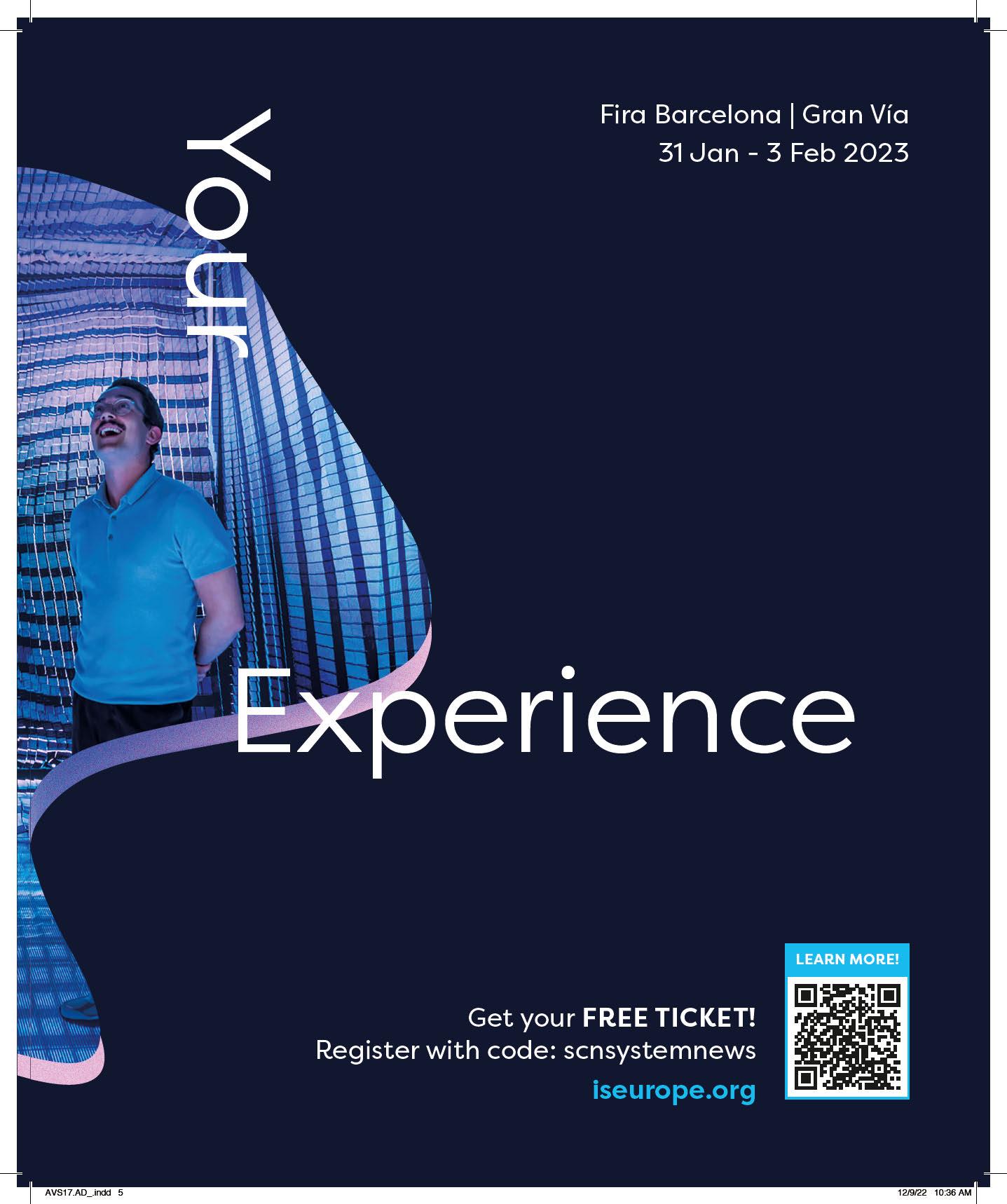
THOUGHT LEADERS LEVELING UP
By Cindy Davis and Macy O’HearnAccording to the National Association of Collegiate Esports (NACE), the NACE Starleague saw a 21 percent growth across 13 game titles, representing 12,824 players, 3,974 teams, and 650 schools. NACE predicts that in 2023 there will be more than 250 varsity teams. Anyone doubting the viability of esports as a sustainable endeavor only needs to look at the 2021 data published by the NCAA, which states that men’s and women’s esports participation has eclipsed that of men’s and women’s hockey.
While the very nature of esports lends itself to virtual audiences, the second half of 2022 saw the return of many in-person events, which included fans filling esports arenas.
These are exciting times for institutions starting or expanding their esports programs. We asked 23 AV industry thought leaders to share insight into the technologies and trends that can be expected in 2023.
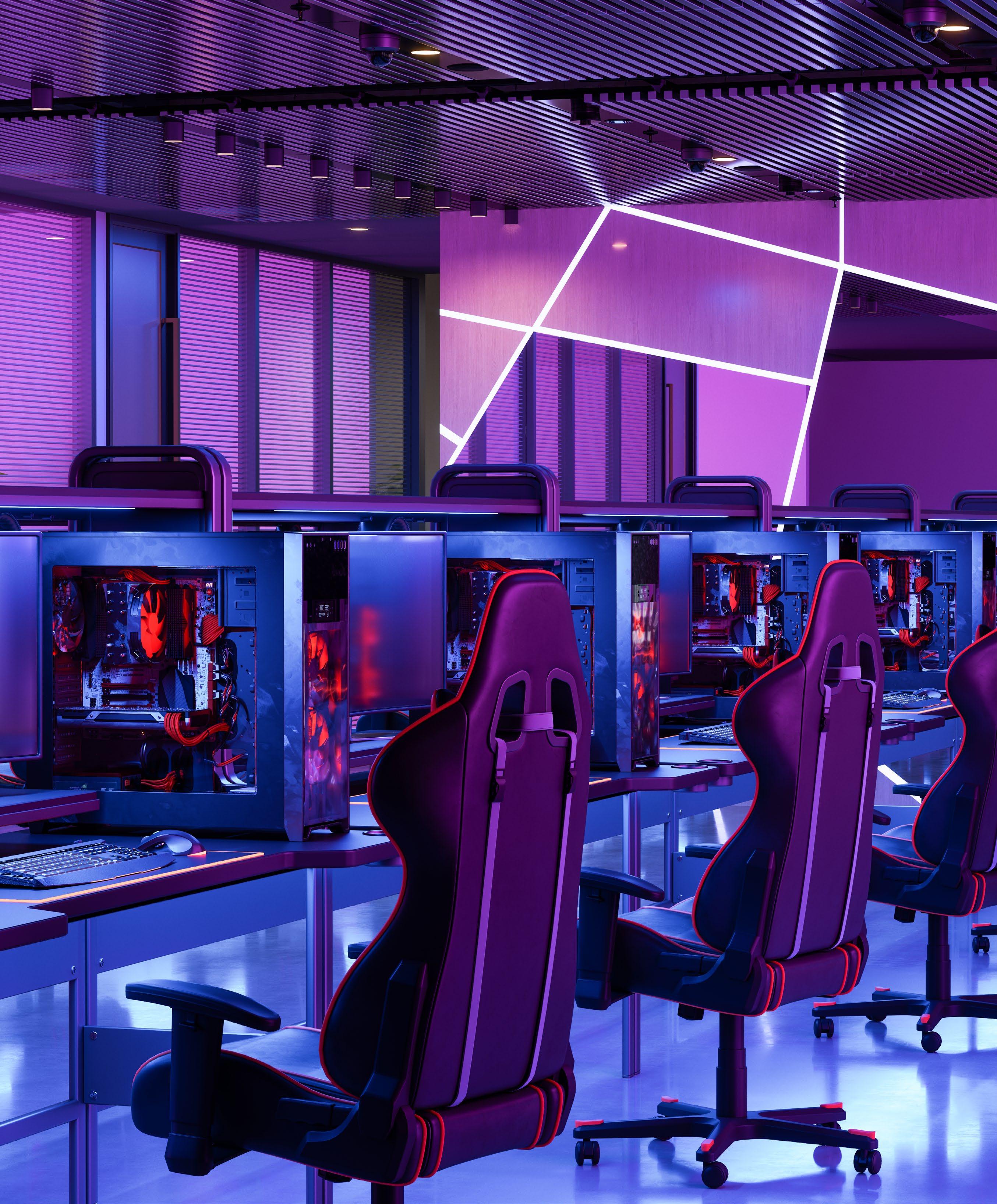

While most educators are aware of the growing esports phenomenon, many remain unfamiliar with the benefits an esports program can offer. Today, schools are expected to not only offer students new ways to learn, but also to future-proof their curriculums with the latest programs. With the appropriate technology and facilities, esports successfully tackles both.
Schools that dedicate the right technology to developing esports programs will see exciting returns. While some parents and educators still consider video games a negative distraction—that’s simply not true. Esports and online gaming have exploded from a cottage industry to a legitimate and exciting way school educators, superintendents, and university presidents can put their institutions ahead of the curve.
A great way to get started with an esports program is to dedicate space and have an environment where the students feel like it’s theirs, just like the football field or soccer stadium. Without a designated space, esports players can lose the communication, collaboration, and leadership opportunities that make gaming such a positive activity.
In terms of technology, don’t be afraid to start small. Many esports programs don’t require a considerable investment and consist of just a few monitors or displays to begin with. At the other end of the spectrum, some of the larger esports programs feature the latest display technologies such as dvLED (directview light-emitting diode) and LCD video walls. Through thoughtful integration of cutting-edge digital displays on both a macro and micro scale, esports programs offer students a unique and immersive educational experience, providing essential skills that they’ll carry with them well into adulthood.
It’s essential that industry leaders and educators capture the mindset of children today to educate them properly. Esports is here, and it’s the future, so we must embrace it with open arms and recognize its potential.
STEVE
MILLEY SalesGroup Manager, Professional Imaging and Visual Systems
Panasonic Connect Esports is experiencing a pivotal opportunity to transform the fan experience and make it even more dynamic than traditional sports games. With viewership on the rise, the industry must revamp its approach to engaging audiences.
To accommodate this rising demand, arenas have become increasingly popular. As these spaces grow, it’s important that fans still feel engaged, whether they’re seated in the stadium or at home. AV technology is critical in making this happen. Large digital displays placed throughout the venue allow fans of all seating arrangements to see the action up close. Displays also present important information about the gamers, which offers a behind-the-scenes look at their strategy and experience to help audiences feel more connected to the athletes. This is also useful for advertisers who are looking to present information about sponsors and promote upcoming games to keep fans coming back for more.
AV technology also works together to elevate the audience’s experience by using professional 4K cameras to capture and display content, as well as IT/IP video processing platforms which create new live production opportunities. Additionally, combining highquality, high-brightness projection technology creates sharp, color-rich imagery to provide an immersive visual experience. And don’t forget about audio—a critical component to immersion. With high-end audio technology, fans can hear crisp, real-time critical commentary to keep them invested in the game. Lastly, since gaming is so fast paced, diagnostic tools are important to managing the health of the AV equipment at all times and ensuring an uninterrupted gaming experience.
AV technology is crucial to creating engaging and immersive esports experiences. By prioritizing advanced technology, universities and esports professionals alike can develop unique programs to keep up the revolutionary momentum of the esports industry.
JASON POLK Marketing Coordinator Absen
Esports is growing to be a projected $1 billion dollar industry, with different revenue streams such as media rights, sponsorships, streaming, merchandising, and others growing by leaps and bounds. It’s the visual experience of tournaments like the League of Legends, Overwatch, and others that is leading to the exponential growth over the past couple of years. The tournaments are now held in large stadiums with massive LED screens where they can not only show what the players are doing, but also are able to be broadcast over traditional media like ESPN. The advantages of the current and next-gen LED solutions are that they are able to broadcast in 4K and even 8K while also decreasing the moiré effect that happens when the camera is pointed at the camera. This increases both the inperson and at home viewer experience, as lag is significantly reduced. What was once an afterthought of playing NFL Madden on a large LED screen is now becoming a reality as LED manufacturers are beginning to move into high-end residential areas, and that is where esports really begins—in the home—as the symbiotic relationship between casual and professional gamers grows.

Marketing Manager, IHSE USA
Creating a successful esports program isn’t merely a matter of buying the right games or computer systems; it requires the same degree of pre-planning guidance as any major live entertainment event. Esports events are typically streamed at 1080p60, although professional events are played offline running frame rates of 120, 144, or even 240fps. Production teams need to be able to switch between live streams and non-broadcast resolutions without losing quality or interfering with the gamer’s computer system. Latency and packet loss are the biggest concerns when it comes to ensuring fair competition, so it’s vital that a stable environment is maintained for both remote and offline systems.
MEGAN ZELLER Senior Director, Business Development Peerless-AV
With esports becoming increasingly popular, finding digital solutions that create an immersive experience for both participants and spectators is crucial.
The main difference between esports and traditional sporting events is that all the action takes place on a screen. This makes the need for massive displays, high resolution, and high frame rates critical to creating a sufficiently captivating experience as attendees are moving around the arena. Elements such as clarity of even the finest details, as well as real-time reactions from participants, are what make the experience thrilling. These key elements may be hard to see if the display is small or the resolution is not crisp enough. Most games run best with 4K resolution at 60 frames per second, so solutions equipped with high resolution and bright imagery can create extremely lifelike graphics, resulting in a remarkably immersive experience.
A large-format display assists in ensuring every action is captured—even the slightest movements. Larger displays are also helpful in recording the rapid switch between perspective views, both on-screen and when displaying competitors’ expressions. Esport action is also often displayed with screenin-screen views, making an easily viewable solution critical.
Solutions like large-scale, indoor dvLED displays with high resolution are the most compatible for meeting every crucial element of esports, making it a great solution for an immersive experience. Video walls display visuals with precise detail and are less affected by lighting when compared with projected displays, ensuring higher-quality pictures and overall more captivating experiences for viewers.
MICHAEL DIBELLA Director of Commercial Product Marketing Crestron

No matter what size esports venue is being created, there are certain constants— requirements that need to be met—for each type of gaming center. Those requirements are often remarkably similar to the standardization protocols needed for a large university or corporate AV project.
The first requirement is high-integrity imagery. The best possible resolution is a big part of making the experience satisfying. As game imagery becomes ever more realistic, display solutions have to keep pace.
Second, sound is becoming more and more a part of the sport. Can players hear the footfall from an opponent behind them in a “single-shooter” style of video game? Additionally, quality microphones can help with team communications as well as the spectator (or recording) experience.
Third, refresh rates, or the number of frames per second (fps) displayed on a screen needs to keep up with the action. Video needs to be smooth and absent of any “ghostly” artifacts, especially when real-time reactions are key.
The fourth consideration: Is your venue equipped to handle the next generation of tech—or more players? Ensure that you have the ability to max out the space you’re creating.
Next, the right light is not only important for large, drama-filled venues; there’s also the need to light players as these venues scale up, as images of players are often displayed to spectators so that the audience can see a gamer’s emotions and reactions. That lighting should never, however, interfere with the gamer’s efforts.
The final consideration is risk mitigation, security, and compliance. In an office environment, most users of an AV system are working on company-issued devices and following specific protocols. Gaming venues see users operating a broad variety of bringyour-own devices (BYOD) from a transient population—from students to campus visitors in a collegiate setup, for example. Piracy prevention is a concern here as well.



It depends on the venue. College esports centers often have to serve several purposes: an education space or computer lab by day, and an esports arena on the nights and weekends. To serve both education and gaming purposes, a highend projection screen does a great job. You want a better projection screen to match the projection capabilities. Desktop monitor arms and PTZ cameras can also add to the esports experience.
For more professional esports arenas— the ones that are working well have control rooms, PTZ cameras, and lots of AV racks with power solutions designed to enhance the AV experience. Rather than a projection screen, you really want the extra flourish that a dvLED video wall provides—not to mention high-end chairs, content streaming capabilities, live production equipment, and so on.
With all that audio and video data flying around, you want HDMI cables that can handle the demand. You need power solutions that can protect sensitive equipment from all sorts of power issues to keep games running smoothly.
SAM NORD Vice President of Global Sales Listen TechnologiesAs the popularity of esports grows, expect more venues to create space for fans to watch their favorite games and players live. Whether in a bar, auditorium, or arena where multiple video screens display the action, it can be challenging for spectators to hear game audio and the athletes and commentators clearly. When games are on different screens simultaneously in a shared space, audio is often silent or reduced to avoid a mashup of indiscernible noise.
With an audio over Wi-Fi assistive listening system, spectators can stream audio from their preferred screen to their smartphone and hear clear sound via headphones or earbuds connected to their device. They also can stream audio from their smartphone to Bluetooth-enabled hearing aids and cochlear implants. It’s seamless and intuitive for users. In venues offering audio over Wi-Fi, users download a free app on their smartphone, select a venue audio channel, and listen to the action despite background noise and distance. Systems operate on a venue’s existing wireless network.
With an audio over Wi-Fi system, spectators can immerse themselves in the action they see on screen and share the experience with other fans. Systems can transmit audio in multiple languages too.
When setting up an audio over Wi-Fi system for esports, inquire about a system’s network requirements. Choose a system that provides fans a superior, personalized, and inclusive audio experience. Dedicated audio over Wi-Fi receivers are also available to loan to spectators who do not have or prefer not to use their smartphone or smart device.
LECOINTE Director, Networked SolutionsSony Electronics
The monumental growth in esports viewership has driven demand for increased production quality, in order to satisfy a global audience that has a desire to experience those events as if they were there. To create this immersive experience, event producers should look to powerful advances in video camera technology to bring the excitement directly to their viewers.



CPMM, Product Management and Marketing, Professional AV and Live Streaming Solutions Roland
Of the five human senses, AV tech for esports can reliably improve three: sight, touch, and hearing. For sight, quality displays with high resolution and frame rates are mission-critical to winning. For touch, the peripherals used by players make a difference. When it comes to hearing, sound is the biggest opportunity of the three in gaming, especially regarding immersion in the games themselves. We’re seeing an expansion of video game music and sound effects that give clues for critical moments, like hearing an enemy’s footsteps. More accurate tools like high-quality audio gear lead not only to a more immersive experience but a tangible benefit to esports winning streaks in certain scenarios.
Lastly, esports is more than just playing video games. Genuine career opportunities exist within the industry, and educational examples that benefit from leveraging the most innovative AV gear include, first, producing competitive esports events and learning new virtual production techniques such as the Epic Games Unreal Engine on XR production stages.
A second educational area is sound design and learning how to compose video game music. Japanese music composers used Roland synthesizers to create some of the most iconic video game music 40 years ago. A final educational opportunity afforded by esports is learning how to create and live stream gaming content while growing a personal brand. Creating great content leads to views, which leads to followers, which leads to brand sponsorships.
RAMZI SHAKRA Senior Product Manager, Large Venue Projectors Epson AmericaThe explosive growth of esports over the last decade has seen an influx of new venues being built, as well as existing spaces being revamped to accommodate the digital-centric sport. The high level of digital stimulation allows for further creative freedom in space design compared to traditional sports. Rather than focusing on one field or court, fans are given a high sensory interactive experience, primarily dependent on multiple, massive displays designed to blur the lines between reality and virtual. With visually compelling and action-packed competition at its core, finding the right display technology is essential when creating an immersive experience that will thrill spectators.
Projector technology provides a costeffective and powerful display solution that delivers crystal-clear visuals, ensuring that no in-game move is missed. Plus, projector installation is significantly less complex with lower costs compared to acquiring a comparable LED video wall setup. One projector can deliver a 13-foot-wide display, whereas a typical LED video wall can require 40 panels for the same installation. Additionally, high resolution and impressive contrast ratios in today’s large-venue laser projectors allow for crisp viewing without sacrificing detail. With advanced image processing, frame interpolation, and low frame latency, this new generation of projectors also delivers realistic, smooth gaming with minimal lag time for fastmoving gaming content.
While some spaces are designed specifically for esports, many competitions also take place in spaces that must be shared with other live events. This requires more flexible display technology. Projection offers added flexibility due to its comparatively lightweight and compact design and the ability to change lenses or zoom settings to accommodate different mount locations and various screen sizes. As esports returns to in person events, technology professionals, integrators, and space designers are looking at display technology that is more adaptable across multi-purpose environments, and projection deserves to be at the top of their research list.
RICHARD EVANS Senior Content Producer NewTekFor any new sport, success generally results from the quality of the product, the talent level and competition, and the number of eyeballs it can attract to generate revenue. As the esports industry experiences growth in both audience and revenue, it faces these same challenges. While esports certainly has generated interest and found talented competitors, organizers must showcase their product to the world through broadcasting. It’s in this final mile that esports leagues must strive to achieve the highest level of production possible, and can look to network broadcasters for inspiration.
Live network sports broadcasts like the World Cup are among the largest, most complex, and costliest productions. Topdollar commentators, large production teams, comprehensive technology packages with dozens of cameras, and a mix of virtual and physical sets create a greater level of quality. While smaller sports cannot match this level of investment, using the right technology and hiring the best talent possible can enable esports organizers to achieve exceptional quality at a fraction of the cost.
Today, esports organizers can obtain the same production technology used by network broadcasts to create graphics, virtual sets, and instant replays. Esports broadcasters must apply the basic broadcast principle of using enough angles to keep live broadcasts interesting. The biggest challenge is achieving visual balance for the video game content, the competitors, and the commentators—all of which can combine to keep a broadcast from feeling stale.
When esports broadcasts add more angles, production will need a professional switcher like those in the NewTek TriCaster family. The switcher allows producers to easily add and switch between shots, simplifying the setup while enhancing the overall production quality to help keep fans engaged.

Esports is growing at a tremendous rate. The entire experience has become more sophisticated, with high-stakes game earnings and arenas filled with eager spectators. For gamers, a single keyboard click can make the difference between a win or a loss, with millions of dollars on the line. For spectators, state-ofthe-art display and production technologies can make or break their entire experience. A powerful, reliable, and scalable AV system is at the heart of the gamer and spectator experience.
In esports, milliseconds matter and there
—Justin Kennington President SDVoE Alliancetheir favorite gamers. There must be no latency between the gameplay and audience reaction. For example, it would be very challenging to complete a winning shot and hear the audience cheer many seconds later.
Fortunately, there is a professional AV solution that is perfectly suited for esports. SDVoE is the ideal solution for distribution and processing applications that demand zero latency and uncompromised video. SDVoE is the only AV-over-IP solution that can match the performance of a matrix switch. Featuring flawless technology and zero latency, users don’t have to compromise performance with SDVoE technology. SDVoE boasts a powerful processing engine capable of video manipulations such as scaling, cropping, and stretching. SDVoE enables end-to-end transport latency under 100
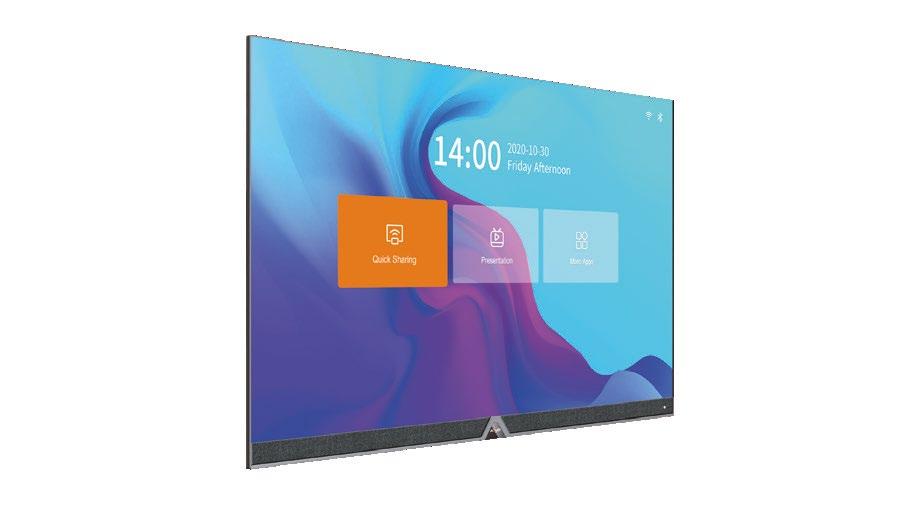

“For spectators, state-of-the-art display and production technologies can make or break their entire experience.”VINNIE ANASTASI Business Development Manager


SAVI Controls
As the popularity of online gaming grows, esports have become a huge incentive for avid gamers all over the world to turn what was once considered a hobby into a career. The grandeur of esports tournaments is an experience like no other, offering athletes and spectators a chance to witness these video games come alive before their eyes.
To achieve this level of immersivity, venues utilize low-latency video distribution platforms—a necessity when displaying such a high volume of data messages and pixels. Low latency eliminates delay and optimizes real-time viewing for both the athletes and spectators. Each gaming station should also come equipped with low-latency screens. Specifically, 60fps is the ideal frame rate for smooth gaming.
DvLED walls are perfect for spectator viewing in esports arenas. Optimal for displaying video feeds in large venues, dvLEDs can be divided into different regions showcasing multiple content streams at once to create a unique, immersive experience.
Lastly, esports venues must be equipped with a robust and versatile control system to seamlessly orchestrate immersive experiences behind the scenes. Your audio system must be multifaceted to support different sources of audio like an announcer’s voice, gaming audio, or distributed music. Make sure your video distribution platform allows you to display each gaming station, all stats, and leaderboards so spectators can remain informed. Increase spectator engagement through the use of production cameras. Rotate through content on the displays; quickly throw up feeds of announcers, a specific athlete, or the crowd to create a wide range of viewing content in the arena and bring the tournament to life. This will allow you to arrange a huge gaming tournament for a host of high-ranking gamers while also enticing spectators to purchase tickets to the event.
PAUL RICHARDS Chief Revenue Officer
PTZOptics
Streaming setups, styles, and platforms vary wildly across the rapidly growing world of esports, and this variety should be embraced, encouraged, and supported. However you play, live streaming is likely an essential piece of the experience; without it, much of the social appeal, strategic in-game coordination, visual engagement, and even the economic model of the fan-facing side of the sport begins to fall apart. Esports are so popular, in part, because they’re so accessible, but the cost and complexity of a high-end live streaming solution sometimes traps players into a single environment or style. Low-quality streams also turn off audiences to the action. Professional quality without prohibitive cost, however, is possible.
Whether setting up an esports program for a team or advising on camera solutions for a single streamer, installers should keep in mind the importance of flexibility and recommend technologies that allow for individuality while maintaining stream quality. At a minimum, the hardware should be natively compatible with video production software like OBS and vMix and streaming platforms like Twitch, which esports tournaments and individual gamers alike use for audience engagement. Other key features include built-in noisecanceling microphones to ensure quality audio regardless of location, and multiple power sources and data output options to support dynamic usage.
TZAHI MADGAR President HDBaseT AllianceJust like any live sporting contest, the energy that the spectators in attendance bring has the power to elevate any competition to an actual “stadium event.” The esports arena is no different when it comes to this dynamic, however, achieving it requires added immersive elements. That’s because unlike basketball, for example, where the AV content displayed on stadium monitors is a complementary component to what is playing out on the court, with esports what the crowd is viewing on the venue’s screens is the actual game happening in real time. As a result, more robust multimedia management and distribution technology is needed to create such an energizing environment.
For the in-person audience to truly enjoy an authentic experience requires them to be able to see both the remotely situated players and what they themselves are seeing at the same time—all in pristine resolution, with amazing sound, and free of any latency. Additionally, just like the proverbial “home field advantage,” this transformation from a crowd that merely spectates to one that actively participates can also have a direct impact on the athletes who are competing. Here is where basing a venue’s AV infrastructure on HDBaseT 3.0 can bring a tremendous amount of value. Through its 5PLAY feature set, not only does it accommodate zero-latency extension of multiple interfaces, including fully uncompressed 4K@60Hz 4:4:4 HDMI and professional-grade USB, but best of all, it does it over a single Category cable. This means more streamlined installations with no clutter—a huge plus in use cases where so many long-range link connections are required.

ViewSonic

Esports has grown in popularity in K-12 as well as in the collegiate ranks. Scholastic esports has provided the same social and emotional learning benefits as traditional athletics. Teamwork, leadership, and a sense of belonging are all embraced in esports, and they help to teach subjects from career and technical education (CTE) to literacy and STEM.
Projected to surpass $1.8 billion in revenues this year, esports captured nearly 27 million viewers in 2021, an increase of 11 percent over the previous year. The North America Scholastic Esports Federation (NASEF) provides opportunities for students to develop STEMand STEAM-based skills using a free, stateapproved curriculum.

The first step to creating an esports program at your school is converting an existing space. Consider building a multipurpose makerspace to double as a gaming room or space for CTE
—Ruben Caputo Vertical Marketing Manager ViewSonic










programs. Existing computer and science labs are a great place to start since they already have an effective gaming room layout and ergonomic seating. The second step is designing for function and health. Esports players spend hours engaged in play, so comfortable chairs and proper posture are critical.
Third, create a break room or rest area. Esports is a sedentary extracurricular activity and athletes need to stretch and move. Fourth, equip the shoutcasting station. The running commentary of esports matches entertains and educates the viewer and is a crucial element that makes esports engaging. Schools should incorporate multiple power outlets for equipment that captures game plays.
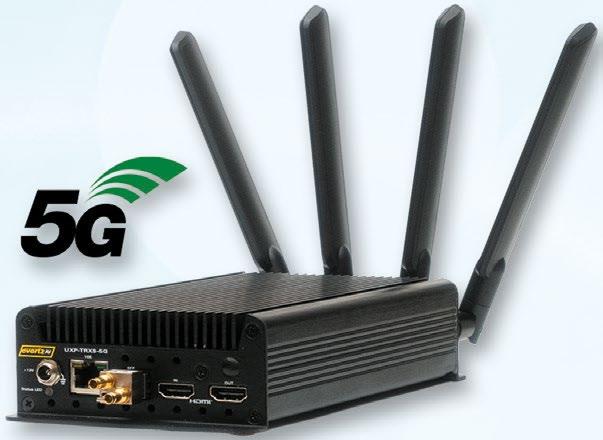
Next, encourage collaboration. Mobile interactive whiteboards encourage collaboration for planning and debriefing sessions. Large video monitors can be used for analyzing replays and brainstorming new strategies. And finally, it is important to select the right technology for the games that your team plays. When choosing a monitor, look for a high refresh rate, fast response time, and high resolution.

“When choosing a monitor, look for a high refresh rate, fast response time, and high resolution.”DAVID PRINCE Senior Audio Architect Panduit
Successful esports programs are dependent on engagement across all participants, which means immersing parents, students, and general spectators into esports events. Without broader engagement, the esports movement risks remaining a “gamer” phenomenon.
AV technology is critical to creating that broader level of engagement. The spectator experience should be on par with a full concert production that scales with the level of play, including high school, collegiate, and professional levels.
Standardization for esports is still in development however, so the rules differ based on the game, league, region, and competition level. For example, there is rapid development happening at the collegiate level, and they are investing in AV technology to drive engagement. In comparison, high schools require budget-friendly solutions that can grow with their programs.
Looking beyond the spectator experience, coaches at all development levels need technology that provides real-time feedback. That means aggregating real-time data and video content at the highest resolution possible to understand how players interact, which requires technology that can reliably take the output from the gamer’s system without interfering with the athlete.
Athletes want technology that helps them play better as a team. That puts the emphasis on communications gear, including headsets and gear drawers that help them focus on interactions. For parents of athletes, the emphasis is on video gear such as cameras and screens that can focus on individual players.
With so much variability across budgets, technology needs, and competition levels, customers need video channels, cameras, processing and delay equipment, and communications gear that can scale as their esports programs grow. Beneath that is the supporting network infrastructure, which benefits from high-speed cabling as well as fiber—providing excellent bandwidth and supporting improved latencies while also strengthening system security. Overall, esports today is about flexibility and growth potential, and providing AV and IT technology through companies like Atlona and Panduit that makes both feasible.
BRANDON WHITE Director of New Product Development Vanco

Esports are a global phenomenon. Insider Insights estimates that in 2022, there were nearly 30 million esports viewers per month in the US alone: Those are NFL numbers. The esports audience continues to grow steadily year-over-year, even as the viewership for traditional athletic events such as the Olympics has faltered. Why? Certainly, a big part of the reason is access. No other sport brings viewers so close to action or lets them connect so directly to the players. For a traditional sport like football to rival the way fans can watch and engage with esports superstars, the NFL would have to stick a UHD camera on Patrick Mahomes’s helmet, have him narrate his strategy into a live microphone, and allow fans to submit play suggestions in real time. This is the kind of access and immersion you should be looking for when starting an esports program. Providing the best visual experience possible is essential. For players’ monitors, be sure to use only certified HDMI cables. The latest cables support UHD resolutions and have next-generation features including variable frame rate (VRF), quick-frame transport, and auto-low-latency mode (ALLM). These features can give players a serious tactical advantage. Live streaming, where players embed their gameplay into a broadcast production side by side with viewer commentary, live video, and other features, is an essential tool for growing an esports program. If your program includes console gaming, you’ll also need capture cards for each device. Every pixel possible must be delivered to players and fans with perfect fidelity and near-zero latency to fully immerse them in the action.
JOE DA SILVA Vice President of Marketing Extron
Esports systems represent the leading edge of AV technology. Professional AV products power the esports action in a wide range of venues, from practice facilities and gaming arenas on university campuses to temporary installations within convention centers. The unique performance needs of esports facilities require expert AV system design knowledge to ensure a superior player experience, while keeping the audience engrossed in the gameplay.
All the action takes place at the player station. It serves as location of gameplay and input to the AV system. Don’t cut corners in this critical area. The primary design goal here is to display uncompromised video on the competitors’ gaming monitors while providing audiences with high-quality images and imperceptible lag, whether watching on local screens or streamed online. Careful attention must be given to properly manage the high resolutions and frame rates used in esports gaming. Player input should register from their controllers to local displays with zero lag and latency.
Switching and distribution systems with signal extension provide the critical infrastructure for AV signal routing to large displays and other areas. Video walls further enhance audience engagement and are often incorporated for simultaneous display of content, including spectator and player reactions, live stats, and gameplay. Live streaming systems enable remote fan bases to watch and cheer for their favorite teams.
Audio is a key consideration when planning an esports facility. It has roles in team communication, gameplay, shoutcasting, streaming, audience engagement, and coaching. An intuitive, easy-to-use control system streamlines operation, management, and monitoring of the AV equipment.
To ensure project success, it is essential to engage the right technology partner to help design your infrastructure. Extron offers a broad range of industry-leading products and technologies that deliver versatility, reliability, and unsurpassed performance.


The esports world continues to grow, from native video game teams to traditional sports such as soccer and basketball joining the esports fray. Monthly viewers are estimated to grow to 29.6 million in 2022, an 11.5 percent increase from 2021, according to an Insider Intelligence report. With that increasing fan base comes larger investments, more mainstream attention, and a greater demand for professional esports broadcasts.
Unlike other broadcast avenues, esports viewers expect high refresh rates in addition to high resolutions. Broadcasters, meanwhile, need fast and precise functionality at their fingertips in the broadcasting control room, including the ability to switch between multiple PCs, output high-resolution video content, streamline their workflow, and more. While a sports fan and viewer of football, for example, expects 4K video these days, gaming audiences are different in that they’re focused on hertz and frames per second. Most monitors output at a 60Hz (Hertz) refresh rate, but many gamers have gone from choosing 120Hz to 144Hz and now even 240Hz, which means 240fps (frames per second). Esports players, especially those playing first-person shooters (FPS) and now some fighting games, need at least 120fps, so esports broadcasters need to be able to transmit signals at these standards.
The thrill of an in-person esports competition lies in the competitors, the crowd, and the venue’s ability to broadcast the action clearly on large screens in real time. To do that in large venues with the best results, use uncompressed signal extension with technology such as HDBaseT3.0. This version of HDBaseT extends uncompressed True 4K HDMI signals up to 100m over a single CAT-6A cable and supports refresh rates up to 240Hz for connected displays.
JASON TIRADO PresidentLightware
Esports is becoming a booming global industry where skilled video gamers compete professionally. It’s growing faster than ever and continues to gather steam at the intersection of gaming and sports—and it’s only gaining momentum.
The rise in popularity has led to esports competitions and gaming labs worldwide. Technology is the cornerstone of any esports competition or gaming lab. Today’s technological advancements have enabled esports to reach new dimensions of quality, performance, and functionality across a global landscape. Several key technical components are essential in esports, but signal management solutions are the cornerstone to any competition or lab. The solutions are responsible for transmitting video content from a source device to a display without compromising quality. There are three critical features surrounding signal distribution that dramatically affect the esports industry: reliability, latency and resolution.
Fans have come to expect quality content, too. Sports enthusiasts demand crisp, realtime audio and video quality to create an immersive experience. Unlike traditional sports, it’s challenging for fans to visualize a gamer’s monitor. Esports arenas are equipped with video walls and projectors to provide participants and fans with a life-size view. A signal management solution is the backbone that enables the audience to remain part of the action.
Lightware is proud to power a global network of artists, gaming professionals, and technologists who come together to create and entertain in many events worldwide. Still, their technology has been a trusted solution for powering mission-critical data for decades. Since 1998, Lightware has been developing matrix switchers, signal extenders, and accessories for the professional AV market. Lightware technology features built-in sophisticated software and hardware features that support reliability, zero latency, and highquality resolutions.
EMEKA OKOLI Vice President, Solutions and Customer Success Zixi
Producing and distributing live esports programming offers unique challenges. Leading esports broadcasters like EA and Blizzard have been changing how they reach a growing audience of engaged viewers.
Esports is particularly sensitive to latency and synchronization. Being able to keep live video at a very high quality while also ensuring a minimum latency across distribution platforms is a significant challenge. Leveraging sophisticated, sequenced stream bonding techniques, esports broadcasters are benefitting from high-performance 5G radio networks and provisioning of video routes within carrier MEC environments to offer significantly lower latency than more traditional satellite or public internet backhaul. Events can now be remotely produced, enabling more live esports coverage from more locations, without sacrificing quality or incurring additional latency. Producers have access to ultra-low-latency processing and delivery tools within the 5G MEC environments. Produced feeds are re-distributed directly from the edge to streaming origins and third-party delivery platforms, bypassing public internet connections that leverage legacy protocols such as RTMP and necessarily increase latency while potentially reducing quality and security.
Live narration and captioning services are now also being dynamically provisioned, enabling global distribution with localized audio or subtitles. These workflows require seamless low-latency delivery of live proxies and enforced connection security to prevent unauthorized access. Event producers are also increasingly offering immersive VR experiences, which require dramatically increased throughput to support higher-resolution video. Maximizing throughput and resilience without increasing latency is a difficult challenge that modern delivery protocols that can dynamically respond to changing network conditions and continuously optimize accordingly are enabling.
Esports have always had a strong interactive component and that is being amplified with new synchronized experiences, supporting viewing parties and monetization opportunities such as micro-betting services. Esports continue to drive innovation in live video event distribution and the pace looks to be accelerating.
CASE-IN-POINT
By AV TechnologyCHAMPIONSHIP-QUALITY VIDEO CAPTURE
Sony collaborated with EVO (Evolution Championship Series) on the production of their 2022 esports tournament held in Las Vegas. The EVO Championship, one of the largest and longest-running fighting game events, is enjoyed by thousands worldwide. Sony provided EVO with a range of production solutions, including the new HDC-F5500 camera.
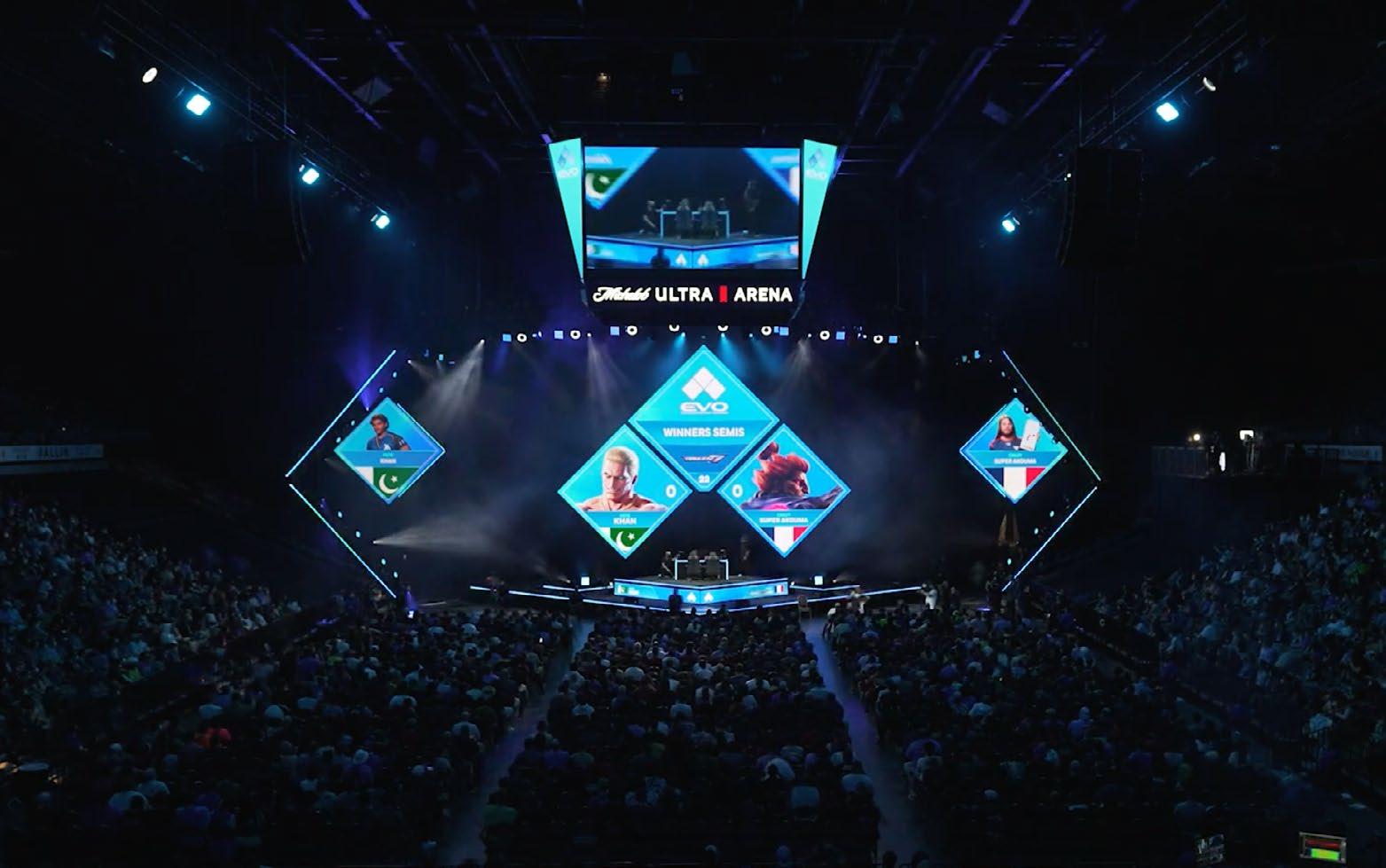
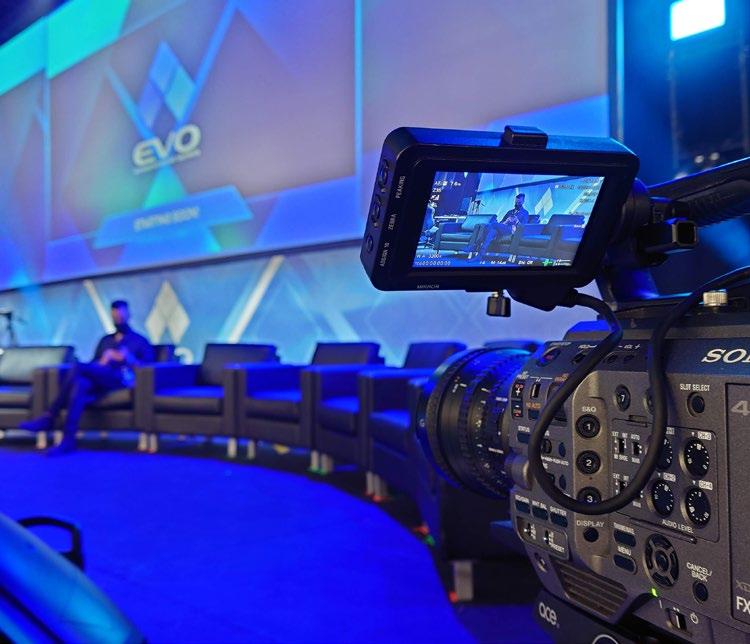
At EVO 2022, Sony brought out key tools from their extensive portfolio of professional video cameras to take the video production to the next level and showcase how new and unique camera technologies could be used to capture every angle of the tournament, while also giving
viewers watching around the world the feeling of being right in the action. Though most of the tournament focuses on in-game scenes, it’s also important to convey the excitement at the venue when capturing players and crowds.
EVO leveraged the full frame sensor technology of the FX6 and FX9 Cinema Line cameras to capture athletes at the tournament stages. The full frame E-mount lenses allow for proper framing of the player in tight spaces, and the shallow depth of field focuses the viewer on the emotions and concentration of the athlete.
A Sony AirPeak drone equipped with a Sony αlpha camera was used to capture all of the excitement of the crowds and athletes from the air. Not only did it provide aerial coverage of the event, but it also created stunning beauty shots that provided scenery for audio commentary during breakaways or establishing shots for arena overviews for the live streaming audience.
The HDC-F5500, powered by a Super35mm 4K CMOS sensor, was used to deliver extraordinary clarity, realism, and shallow depth of field with every scene—from wide beauty shots to tight close-ups from the rear of the arena. The F5500 allowed event producers to create a cinematic look for the content, gave them the ability to capture at 120 frames per second for slow-motion replay of the tournament action, and easily connected to existing SDI-based infrastructure for traditional live production workflows.
By combining the power of the above technologies, EVO was captured from every angle with incredible quality and delivered to viewers around the world.
Go behind the scenes at nine colleges and universities and see what gives them a competitive edge in esports.
POWERFUL BROADCAST STUDIO SOLUTIONS
Blue Mammoth Games, an independent Atlanta-based game development studio, has found a stronghold in the industry with its fighting game Brawlhalla. Brawlhalla has grown to over five million players and now hosts a Brawlhalla World Championship annually. As the Blue Mammoth community has grown, so too has its facility. The company outfitted an extension of the office to work as a broadcast studio that includes a control room, server room, and two sets.
Each space houses essential broadcast equipment that needs to be accessed and integrated as if in the same room.
At Blue Mammoth, the control room was where all the game developer’s PCs were located. These PCs generate broadcast-critical elements, including graphics, replay, playback, and audio. The server room, however, housed the Carbonite Switcher, networking, and encoder, which were equally essential to their broadcasts. As a result of these separate spaces and equipment, Blue Mammoth was tasked with running a significant amount of cabling between the control room and the server room. Any time new equipment was added, it called for additional cable runs, either through the ceiling or, in last minute cases, across the floor. Blue Mammoth has run upwards of 2,500 feet of cabling. Additionally, this setup posed potential security and connectivity issues. On the security side, anyone with access to the control room was able to interface directly with critical broadcast infrastructure. There was also the challenge that during operation, cables could be disconnected if bumped or tripped over. These issues occurred because the company had computers providing broadcast-critical signals that needed to be operated from one space and sent to another.
Installing a KVM system would allow Blue Mammoth to move all the broadcast-critical machines into the server room, reduce a significant amount of cabling, allow for a greater degree of flexibility in upgrading and changing new equipment, as well as address arising security issues. The company sought out a proven KVM solution that could meet all their requirements. Among the KVM solutions providers at the NAB Show in Las Vegas,
IHSE stood out from the pack. IHSE offered show-stopping matrix- and IP-based options with rich features that would solve these challenges and allow Blue Mammoth to scale in the future.
The company selected IHSE’s Draco tera flex KVM matrix switch and Draco vario HDMI extender. The Draco tera flex KVM matrix systems bring advanced features found in IHSE’s larger-scale matrix frames in a design built for smaller applications. Port options range from 16 ports to 160 ports and can be packaged in one-, two-, or four-RU frames sizes. The Draco tera flex incorporates several advanced features from the Draco tera enterprise series, including LDAPS, encrypted communication for maximum security, and fast booting. The switch’s modular structure permits the simple interchange of individual components and paves the way for future expansion.
IHSE’s Draco vario HDMI extender gives users real-time access to HDMI computers from a remote workstation, including monitor, keyboard, mouse, loudspeakers, and other peripheral devices. It’s the perfect extender for high-resolution HDMI video signals of superior quality, including 3D formats, full HD, and 2K, as well as digital audio signals. Multi-head applications are achieved using an optional module.
The company was able to install the IHSE KVM system over the course of two days, fully revamping the studio, including running additional CAT-6 for the user stations. With IHSE’s KVM and extender solutions, Blue Mammoth was able to greatly reduce the amount of cabling between the control room and the server room. This had the added benefit of improving noise levels, heat, and available space in the control room. Solo operation of the broadcast studio is also significantly easier. One user can macro into any computer as needed with no delay and without posing security risks.
Mateo Palfreman, manager of broadcast at Blue Mammoth Games said, “The IHSE KVM system has been one of my favorite additions to the studio this year. The flexibility and reliability of the product has really allowed us to push our broadcasts forward.”
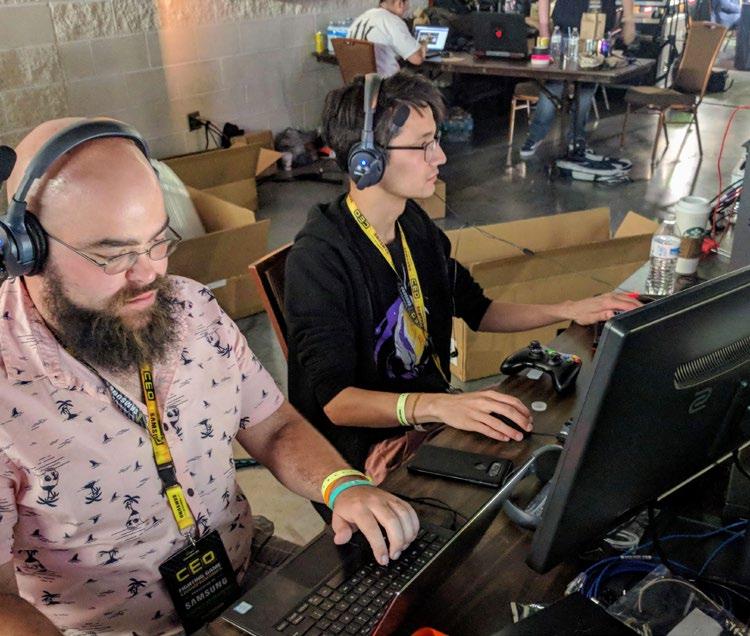
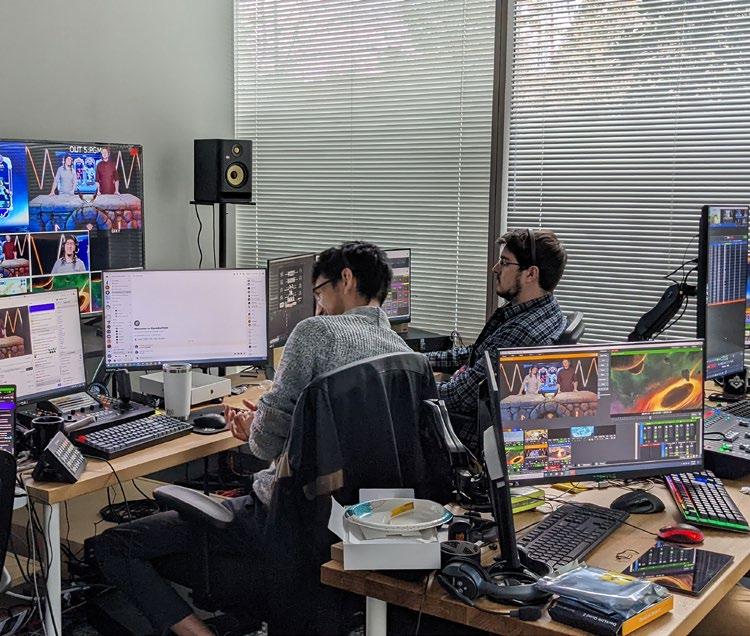
PROJECTION ELEVATES GROWING PROGRAM
As colleges and universities around the world started implementing labs and performancestyle facilities to host their esports programs, Southwestern Oklahoma State University (SWOSU) wanted to offer students an engaging, collaborative program that followed a nontraditional, theater-style format.
While the theater format is not completely unique, SWOSU was challenged to reconfigure a tall, narrow former racket ball court for the site of its esports arena. In order to best optimize the space while giving way to a spectator-style venue that helps SWOSU stand out, the university looked to MA+ Architecture, a professional planning and interior design company. MA+ approached Cory’s Audio Visual, an audiovisual integrator located in Oklahoma City, Oklahoma, to support the project. Cory’s Audio Visual leveraged Panasonic’s projector architecture for its crisp imaging, high refresh rate, and high contrast ratio—all important factors to powering the best esports experience.
To elevate the visual experience, SWOSU utilized two Panasonic PT-RCQ10BU 10,000-lumen WUXGA 1-Chip DLP Laser Projectors and two ETDLE350 Projector Zoom Lenses. The projectors’ detailed, sharp, color-rich images create an immersive environment for both gamers and viewers to feel like they’re active participants in the games. Other features include the Contrast Sync function designed for multi-screen applications, Dynamic Light Control to adjust the amount of light output in the arena, and Backup Input to
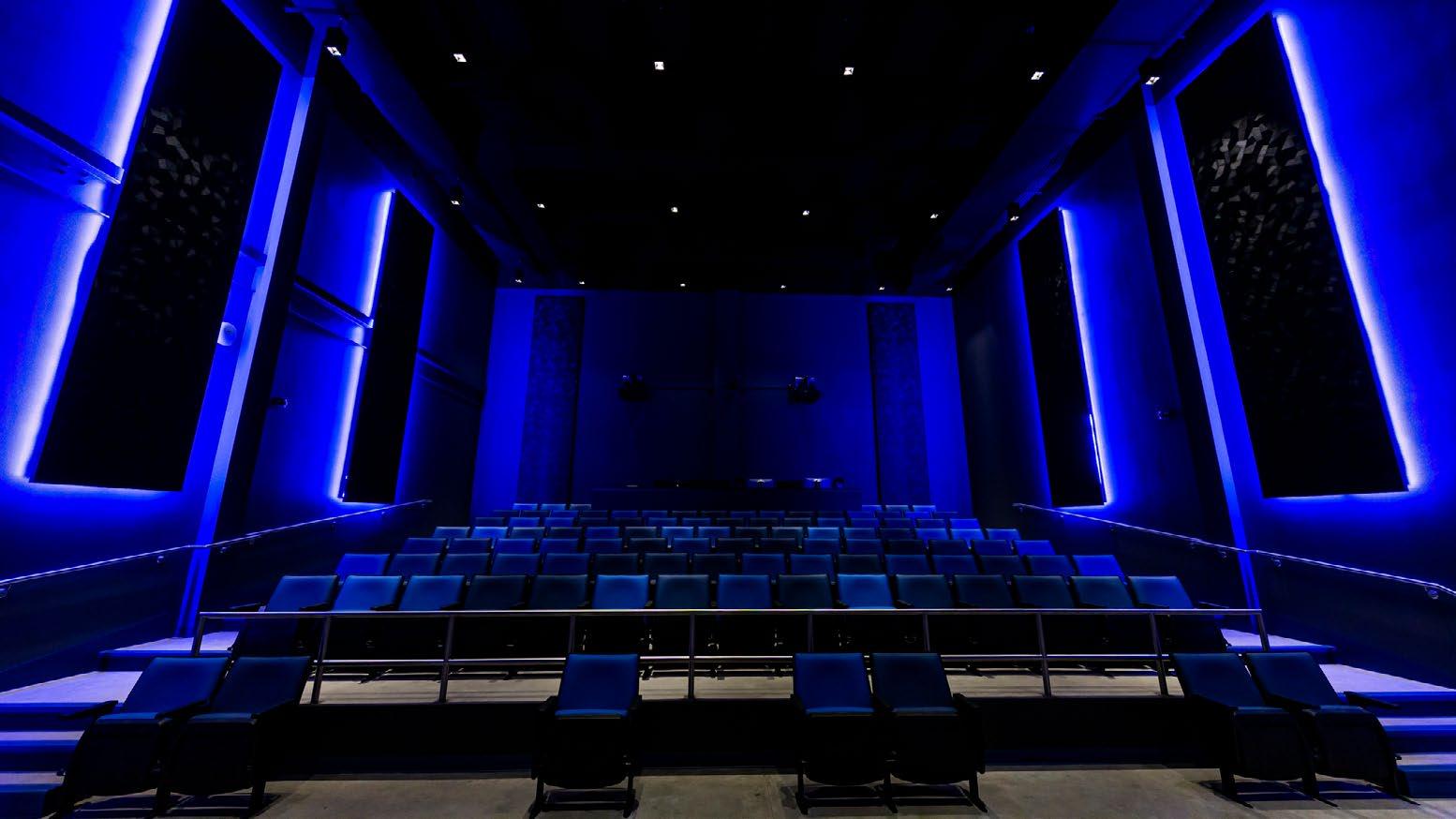
assure visuals are maintained at all times and projection is not interrupted.
“Panasonic’s laser projectors are a game changer for SWOSU’s esports arena. No other program in the U.S.—much less the state of Oklahoma—is equipped with high-caliber display technology that optimizes lighting conditions based on light level in game play,” said Robert Howard, project manager at Cory’s Audio Visual.
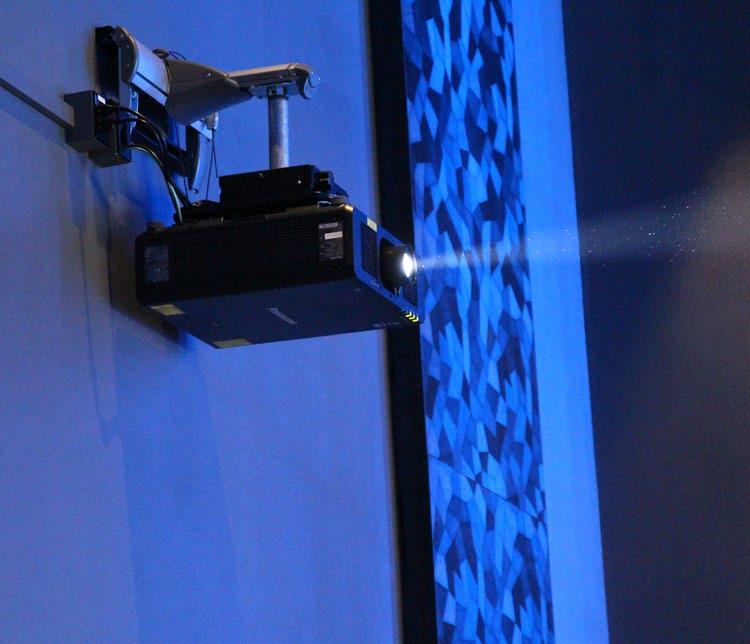
Today, the renovated space features stadium seating, a 159-inch digital viewing screen, and ambient light rejection fabric to help the visuals pop—especially with down lighting directly below the screen. The arena seats up to 113 people in a spectator-style arrangement, allowing spectators to watch competitions fluidly.
The esports program live streams competitions so students, regardless of their location, can watch and cheer for the SWOSU team. Since first opening, the arena has hosted, on average, 30 people or 10 competing teams for each tournament—a number expected to grow with the 12 events already planned for the first half of 2022, including the Oklahoma Scholastic Esports State Championships. The competitions are also broadcasted to different places on campus and to online platforms, where viewers from all corners of the world can watch.
The revamp of the facility has even supported recruitment for the esports program. This facility has allowed SWOSU to rapidly increase its recruitment efforts, growing the size and general awareness of its program. “This install definitely put SWOSU on the map for esports, whereas we were just getting started before,” said Howard.
“The University is well on its way to becoming an influential force within the esports community and expanding student engagement through team collaboration.”
As the global esports industry continues to experience immense growth, especially across higher education, facilities will look to adopt topof-the-line projection and display technology for game-winning solutions.
“The world of esports is growing so intensely and it is great to have a partner like Panasonic who we can count on for our clients’ goals of having facilities that create an experience for everyone, beyond just streaming games,” said Abby Wolfe, director of Marketing and Communications at Cory’s Audio Visual.
HELPING PLAYERS GET IN “THE ZONE”
Daktronics has partnered with Electronic Gaming Infrastructure Company, in conjunction with Samir Trading, to manufacture and install direct-view, high-resolution LED video displays for E-Games’ VOV The Zone in Riyadh, Saudi Arabia. The installation took place early in 2022, creating an immersive environment for esports participants and others looking to game at the location.
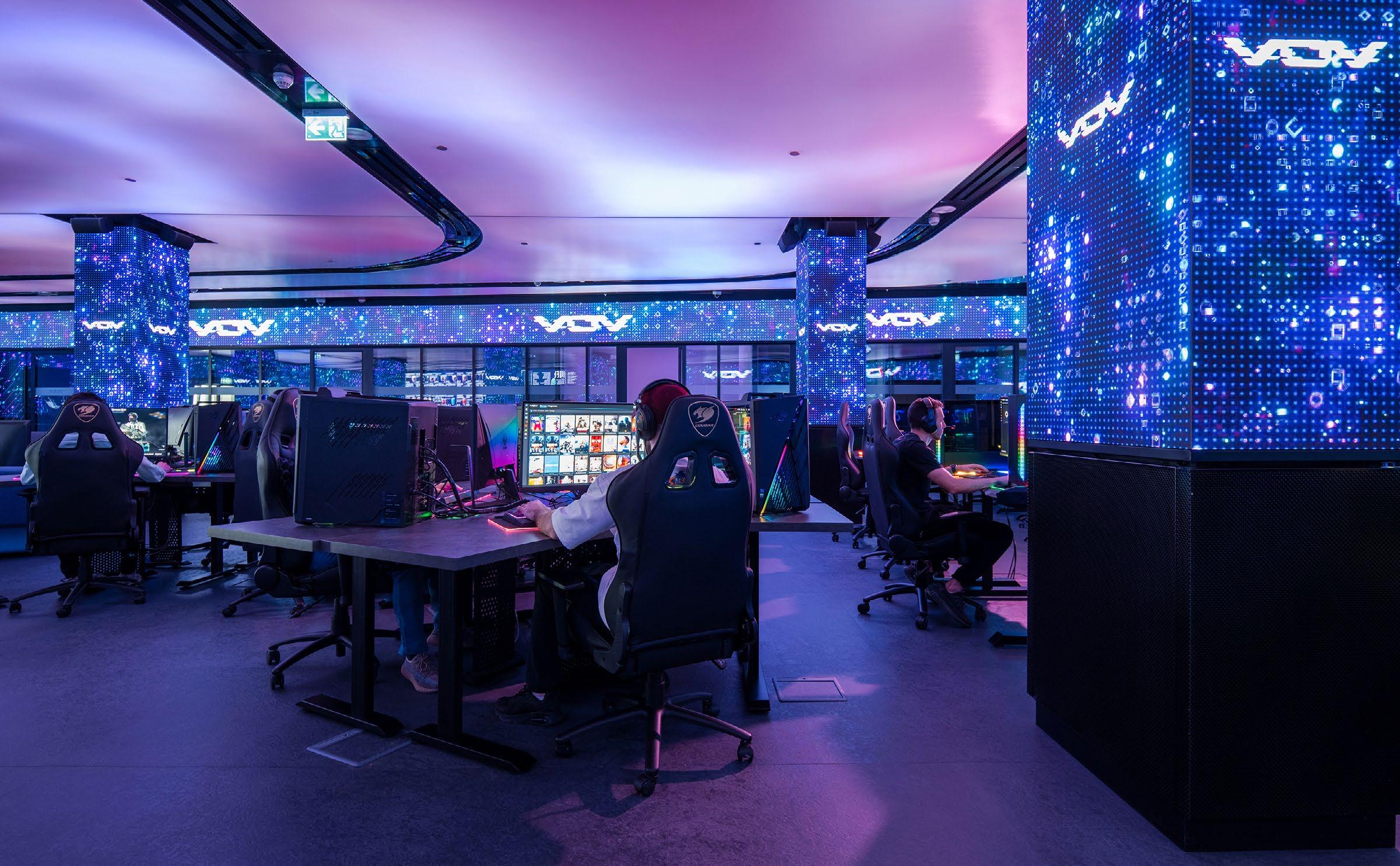
In total, 10 displays featuring 1.9mm pixel spacings cover the walls and columns in The Zone to deliver 147 square meters of LED video display space. The main video wall display includes two concave corners as it wraps around the interior of the room at 1.03m high by 18.3m long. Three more displays mounted to the walls measure 4.12m high by 7.32m wide to deliver additional content and information. Covering the six support pillars in the room are four-sided LED displays measuring 2.06m high and wrapping 3.05m
around each pillar.
These displays can work together to create an immersive gaming environment with coordinated content literally surrounding gamers as they play. The versatility of these digital displays, along with the custom control system provided by Daktronics, allows them to also work independently to show specific content in the area including results, announcements, sponsor content, or other pertinent information as needed by The Zone.
“The displays bring this place to life with highintensity content related to gaming and esports, especially the brand of VOV,” said Ahmad Dahmash, Daktronics regional director for the Middle East. “We’re proud to work with such a great team and local partner in Samir Trading to make this project a reality that impacts people immediately when they walk into The Zone.”
Daktronics offers a line of narrow-pixelpitch LED displays ranging from 2.5mm down to 0.7mm pixel spacings. This product line brings expansive opportunities to those spaces commonly associated with LCD technology to create luxurious and immersive environments; share artistic digital content; or show detailed, high-quality video.
“The digital displays installed around the room bring The Zone to life for our players!” said The Zone representative. “Working with Daktronics to deliver this exciting and enticing location for gaming had been a complete pleasure and we’ve received great feedback from those that have been able to experience this setting firsthand. The versatility of the technology and crisp imagery it delivers helps build an atmosphere that is nothing short of amazing.”
The Carolina Gaming Arena at the University of North Carolina at Chapel Hill (UNC-Chapel Hill) is a place for students to come together, find others within the oncampus gaming community, and celebrate everything students do in the area of gaming—be it social, academic, or research oriented. The facility is also home to Carolina’s competitive esports teams for Rocket League, Valorant, Counter-Strike: Global Offensive (CS: GO), Dota 2, League of Legends, Rainbow Six Siege, and Overwatch.

“The goal of the Carolina Gaming Arena is to reach as many people as possible to share a message about gaming and an experience that is welcoming, lowers toxicity, increases diversity, and supports students where they already are,” explained Lee Hyde, ResNET director for Information Technology Services at UNC-Chapel Hill. “We wanted a space that would attract the most diehard competitive player, as well as someone who has no interest or perhaps is a bit timid about entering the world of gaming.”
Hyde and his team, therefore, needed a simple and intuitive control system that would allow students to interact with the technology in the room with ease. He envisioned an interface that would allow students to grab video from any gaming system or PC in the room, bring it to a specific display, and consume the experience of someone else playing.
Hyde and his team consulted with various mentor groups and technology supplier CDW, and repeatedly heard that they should consider Black Box. The Black Box MCX products are built on SDVoE technology to harness the power of Ethernet for matrix-switch quality and performance without limitations. Serving as a single network solution that enables converged networked AV, MCX delivers up to 4K 60Hz 4:4:4 video uncompressed over 10GbE with extremely low latency and switching times. The Black Box system makes it possible to handle video walls and video extension (point-to-point and pointto-multipoint) on a traditional IT network, with intuitive control over how content displays on every screen. As a software-controlled system, MCX brings flexibility and infinite scalability that allows for unrestricted system expansion.
According to Hyde, the most attractive aspect of the Black Box MCX system is that it can easily be deployed and extended without reliance on a matrix switcher in an equipment closet. In addition to eliminating the need to run HDMI lines, he created a distributed architecture and minimized the amount of equipment that could fail during operations.
“If you have power where you need it to be, you just
run an Ethernet cable, connect MCX devices on either end of the network, and you’re good to go,” said Hyde. “The only requirement of using MCX is that it runs on a 10Gbps network, and we are a CAT-6A campus, so it’s just seamless over the same network infrastructure we already have in place. And, honestly, it would be incredibly easy to run a network cable if we did need an additional location.”
The MCX system controls audio and video signals for nine Samsung 55-inch monitors, three video columns made up of two Samsung 46-inch monitors mounted in portrait mode, and 13 Samsung 4K monitors of various sizes for content distribution across viewing areas. The fact that MCX has zero image lag is also tremendously valuable in the gaming environment, where exceptionally low latency is necessary.
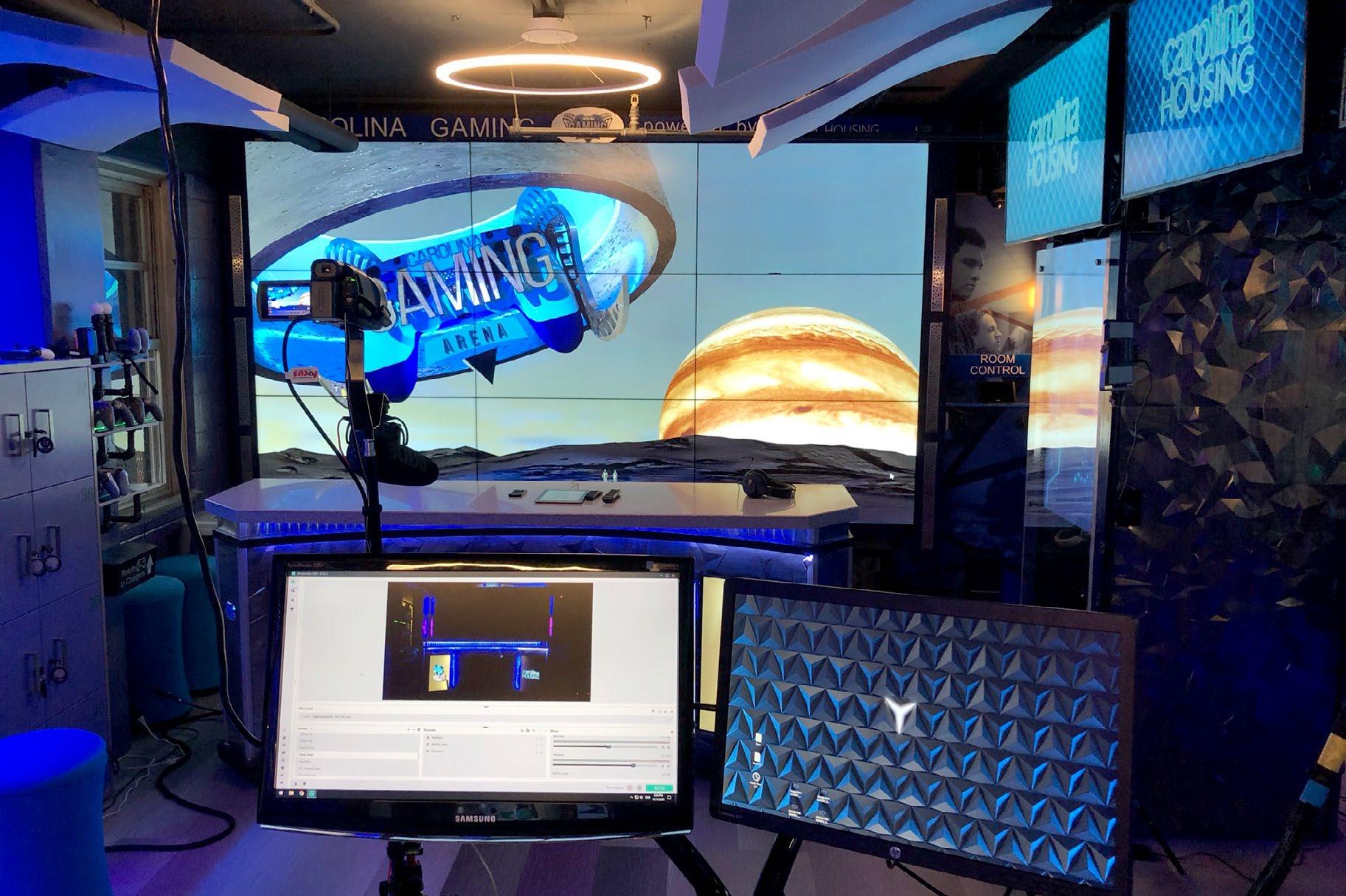

MCX allows users to handle video and audio separately, so the Black Box system made it easy for Hyde and his team to amplify audio in different zones of the arena without a lot of extra components. Along with audio and video, MCX decoders and encoders handle serial and USB distribution.
“We have 29 screens plus a ton of other devices throughout the room to manage, and it was important— and surprising to us, frankly—that the MCX devices so easily could send signals, serial commands, or other commands to each of those devices,” added Hyde. “We can instantly turn on the room or turn it off without having
to walk around and individually control devices.”
Students can use a Black Box touch panel and graphical user interface to select any computer or game console listed on the screen and choose the screen on which they’d like to watch game play. Hyde and his team can customize the appearance of the touch panel and change its configuration over time. With MCX decoders installed in the nearby Carolina House Creative Labs, students can produce content from the arena for streaming on the Carolina Gaming YouTube and Twitch channels.
With its straightforward control over video distribution, MCX lowers technical barriers to participation in the gaming community. It also helps UNC-Chapel Hill offer a unique environment that students don’t necessarily have available to them anywhere else.
Hyde plans to expand the use of MCX in the future. He can easily run additional decoders out to other locations throughout the building or across campus. He is working with Carolina Athletics not only to support teams within the gaming arena, but also to bring a larger esports tournament into an athletic facility such as the Dean Smith Basketball Center. Looking ahead, he hopes to add a larger gaming arena in the next several years.
“We have a mission to make sure that gaming is open and free to everyone, and that it is as easy to interact with as possible,” said Hyde. “MCX devices are definitely helping us achieve that goal.”
A HIGH-ENERGY GAMING CENTER
Hangzhou Esports Center, the first professional esports venue in China, recently opened its doors to esports professionals. The starshipshaped venue is the perfect fit for the futuristic and science-fiction feel of esports, but due to the large event space with a long reverberation time, it was a challenge to find an audio system that could achieve the extremely high requirements for esports competitions.
Tasked with providing the overall solution for the Hangzhou Esports Center project, Zhejiang Dafeng Industry Co., Ltd., along with AV distributor and provider EZPro, designed and delivered a comprehensive PA system utilizing a range of products from Eastern Acoustic Works (EAW). The venue’s new PA system consists of 36 EAW KF810P line array systems, 12 EAW SB818P|F single 18-inch subwoofers, six EAW SB180zP compact highoutput subwoofers, and fill speakers from EAW’s catalog. The system was also designed with EASE4.4 and EAW Resolution sound field simulation software.
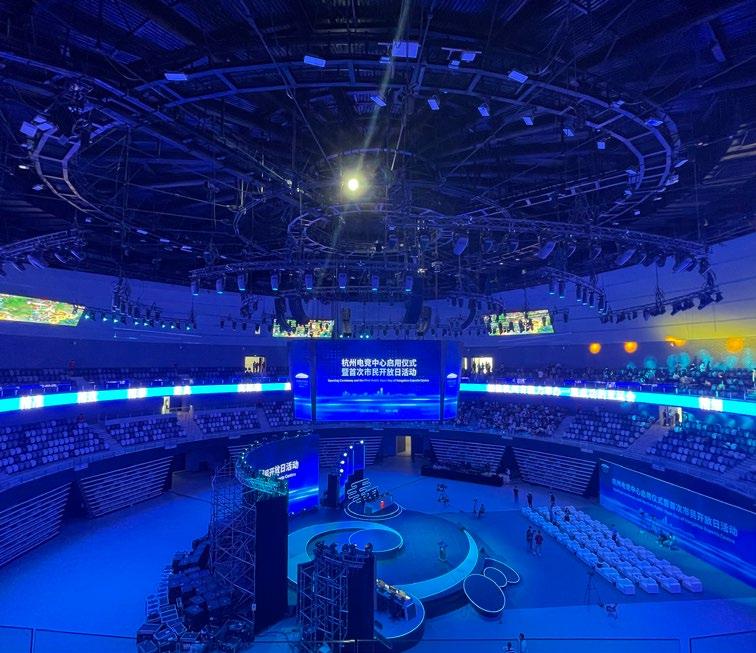
The 36 EAW KF810Ps are divided into six groups of six to achieve even sound coverage throughout the esports center, while the SB818P|F single 18-inch subwoofers are hung above each group of the full-range line arrays
to extend the lower cutoff. All the loudspeakers are centrally hung above the four-sided, funnel-shaped LED screens inside the venue.
Additionally, on the ground are six EAW SB180zP subwoofers to provide surging low-frequency energy to enhance the intense atmosphere of esports competitions, and to allow players to accurately hear the returned audio signal and respond in time. Fill speakers are hung below the funnel-shaped LED screens to cover the infield, and six portable monitor speakers are provisioned for the stage.
The EAW system has been accepted with high regard after its first use for the opening game, the “Naraka: Bladepoint” martial arts challenge. The new PA system not only met the first-class standards for the stadium but was able to fully express the tense and exciting atmosphere in the venue, and has been highly praised by the organizers and players. System designer Li Zule, from Zhejiang Dafeng Industry Co., Ltd. shared that, “EAW’s KF810P worked great for our large events, providing excellent, uniform coverage and accurate control.”
The Hangzhou Esports Center will also host the 19th Asian Games Hangzhou Esports Competitions, set to take place in September of 2023.
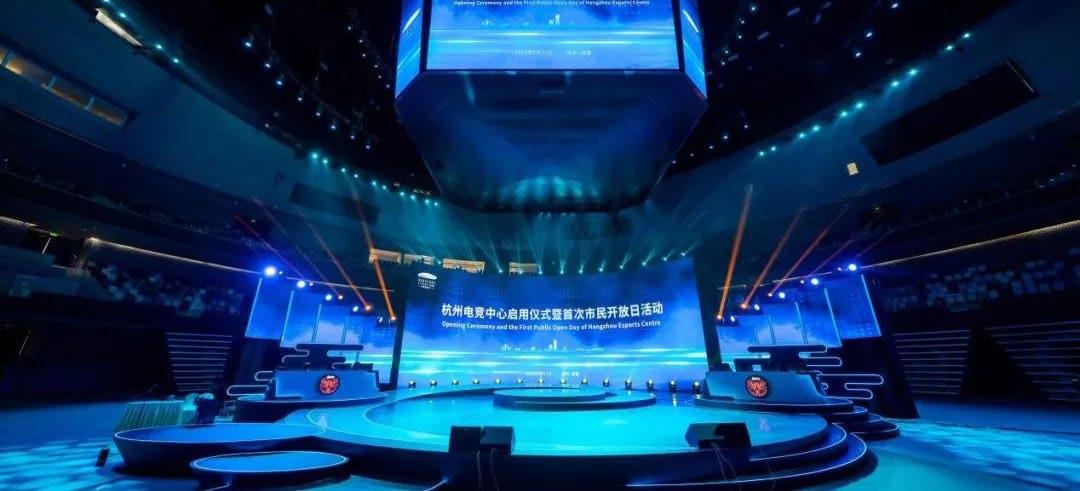
A TOURNAMENT SUCCESS STORY
During the 2019 StreamGeeks Summit, a threeversus-three RocketLeague esports tournament was live streamed at New York City’s S.A.R. High School and broadcast to Twitch. The studentrun broadcast team used a Wirecast Gear video production system, which was connected to three PTZOptics cameras via SDI and seven gaming computers using NDI.
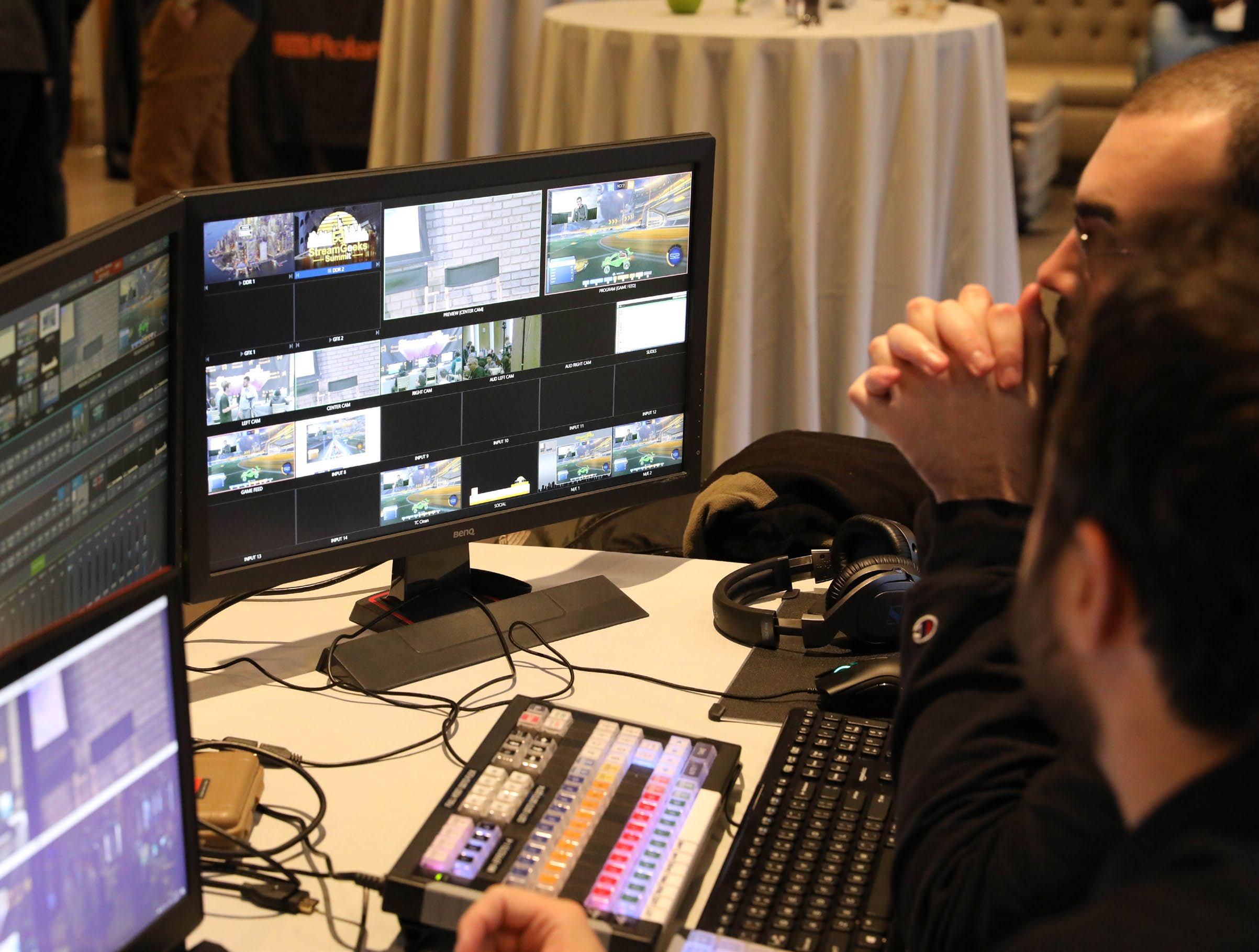
The main PTZOptics camera was an SDIconnected 12x ZCam, which was used to capture the play-by-play announcer team from Hofstra University. Students from the S.A.R. High School also had access to two PTZOptics 20x-SDI cameras that they could remotely control using
Wirecast and Xbox controllers to capture various views throughout the esports tournament.
The gaming computers were provided by Helix Esports, and each computer was used to run Open Broadcaster Software (OBS) to capture the RocketLeague gameplay. OBS was used to create a picture-in-picture output with a webcam source from PTZOptics webcams plugged into each computer via USB. OBS is able to output an NDI IP video feed for each computer it is running on, which it is then able to be pulled into Wirecast as additional sources over the LAN. In a similar way, the observer PC, used to view gameplay from each player in the RocketLeague
tournament, was captured via NDI and OBS.
The observer PC was used by the play-byplay announcer and the student-run broadcast team as a source for viewing the gameplay at large. The production system allowed students the ability to create a dynamic esports video production using a mix of gameplay screens, player webcams, and PTZOptics cameras in the space.
Live streaming esports tournaments has provided S.A.R. High School students with realworld video production experience, and allows them to apply critical thinking skills to produce a quality broadcast.
EXCEPTIONAL CONTROL EMPOWERS VARSITY ESPORTS
Point Park University in Pittsburgh, Pennsylvania wanted to enrich their athletics program with an exciting foray into esports. After successfully hosting a competition off campus, they hoped to have a varsity team ready to compete in the National Association of Collegiate Esports Rocket League fall season and League of Legends. In addition to competitive gaming, students enrolled in the program would work with the coach and support staff to learn about the back-ofhouse processes and supporting technologies.
To start the project, Point Park University’s Physical Plant remodeled an under-utilized aerobics studio on the second floor of the Student Center. The Media Services and IT departments worked together to deploy a new high-speed data network and incorporate multimedia lines within the 1,450-squarefoot room. Then, they teamed with RPC Video, Inc. to design an AV system capable of meeting the extreme demands of esports. To provide the kind of system performance necessary for a seamless competitive gaming experience, the team chose Extron XTP Systems, along with the SMP 111 streaming media processor and Pro Series control products.
Source signals originate at 16 gaming stations, each with a custom, Intel Core i7 10700K 8C/16T 5.1GHz computer and a 144Hz Asus ROG Strix XG279Q 27-inch HDR gaming monitor. Coaches, team members, and local spectators can observe the action taking place at any gaming station on 70and 86-inch displays, which are mounted to the left, right, and center walls. Additional displays include 24-inch monitors at the instructor station and within the adjacent equipment room that houses the AV switching system.
Switching hardware with the highest-available performance was required for the signal path. An ExtronXTP II CrossPoint 3200 modular matrix switcher with a 50Gbps digital backplane provides instantaneous switching among the gaming station feeds. It is configured as 20 by 20, with XTP II CP HD 4K PLUS I/O Boards supporting uncompressed HDMI video resolutions up to 4K60 4:4:4 at data rates up to 18Gbps. The system also complies with HDCP 2.3 for the content-protected games. A redundant power supply ensures continuous game play, which is critical during matches. The matrix switcher also fits easily into the equipment room rack, allowing maximum floor space within the game-play room.
Extron HD Pro Plenum Series hybrid fiber-copper cables carry AV signals between each gaming station

and the matrix switcher, delivering HDMI signals up to 300 feet. The cable’s built-in active circuitry is powered by the connected gaming station computer. The HD Pro Plenum cables are an ideal choice for this application since they can send HDMI signals long distances with pristine quality without any compression or latency. They support a wide range of HDMI resolutions, refresh rates, and HDR. Also, the flexibility and narrow bend radius of this plenum-rated cable made it easy to install. Integration of HD Pro Plenum cabling reduced overall system complexity and cost.
To scale high-frame-rate, 2,560-by-1,440 signals from the gaming workstations to the 3,840-by-2,160 native resolution of the large displays, an Extron DSC HD-HD 4K PLUS A is mounted to the back of each display. When no signal is present, the scaler’s screensaver is configured to show school branding content. The scaler supporting the center display also de-embeds audio coming in from the XTP II CrossPoint matrix switcher, enabling audio extraction for the external sound reinforcement system.
An Extron SMP 111 high-performance recording and streaming media processor captures and distributes the game play for selectable live streaming to Twitch, YouTube, or similar platforms.
The coach uses a TLP Pro 1025T TouchLink Pro touch panel installed at the instructor station to control a variety of AV system operations. The touch panel works in concert with two rack-mounted IP Link Pro control processors to manage all of the major components in the system. Three AV LAN ports on the Extron IPCP Pro 360 processor allow control of the AV equipment and safeguards them from outside intrusion or interference. The IPL Pro S3 processor enables control of the observation displays over the university network. The processors also provide application controls, such as AV system and device power, audio level adjustment, and streaming/ recording controls.
RPC Video and an Extron system design engineer worked together on site to commission the XTP system in time for the team’s first training session. Chris Gaul, Esports director and head coach at Point Park University said, “Extron worked with us to build out an exceptional facility to service our esports program for its inaugural year. The installation was seamless, and the system assists with coaching as well as showing off the space to new recruits. I could not be happier with the project results.”
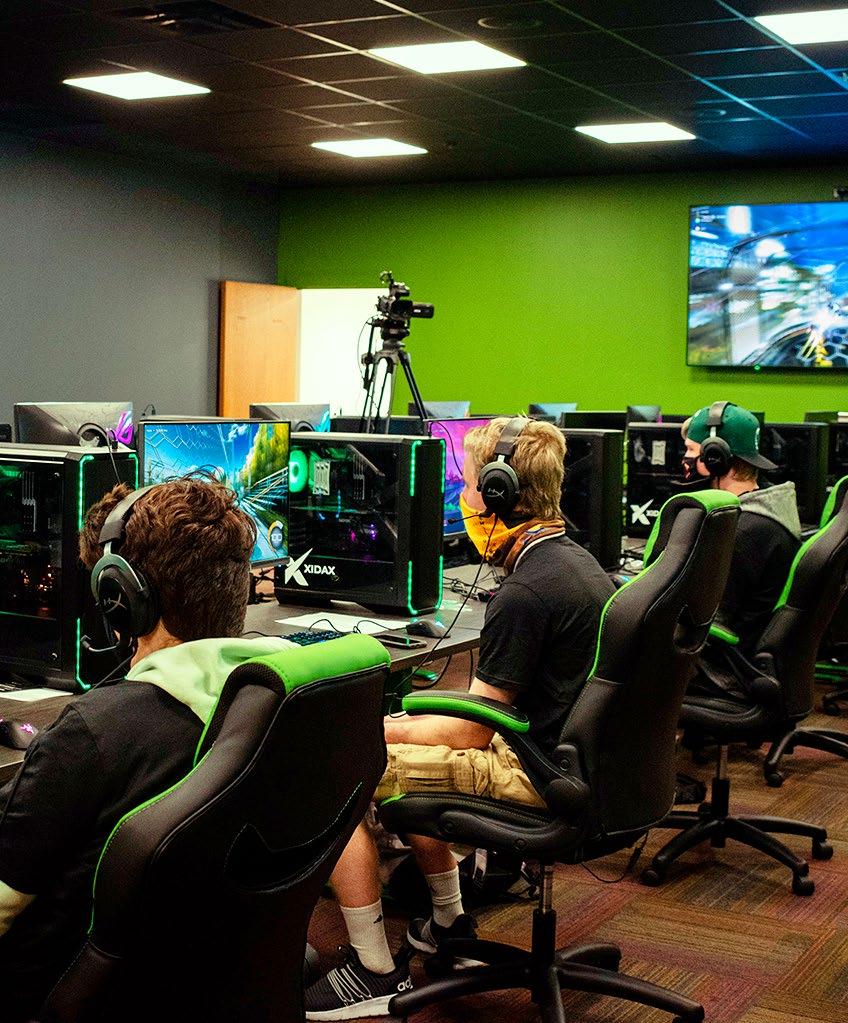
ESPORTS STREAMING
Fortress Melbourne, Australia’s premiere games and entertainment venue, sits at almost 30,000 square feet across two levels and is home to The Alienware Arena, the largest permanent esports structure in the Southern Hemisphere. It features a 220-seat retractable grandstand and permanent stage with 12 top-of-the-line Alienware PC stations for live LAN events. Chris Stewart, Fortress Production and Broadcast manager, oversees capturing and delivering these engaging live streams. To give audiences a fully immersive experience along with the player reactions, Stewart relies on the CV506 POV Camera from Marshall Electronics. The cameras were supplied by Marshall’s local distributor, Corsair Solutions.
“In esports, you often face limitations around space and positioning that you don’t typically encounter with traditional sports,” said Stewart. “We have all our players on stage, close together, so it is crucial that the cameras we use can fit within the constraints of the small environment. Additionally, POV cameras are, by their nature, required to be either on top of the desk the player is sitting at or right beside it, so any gear we use must not interfere with the players’ space. That’s where Marshall and the CV506 come in.”
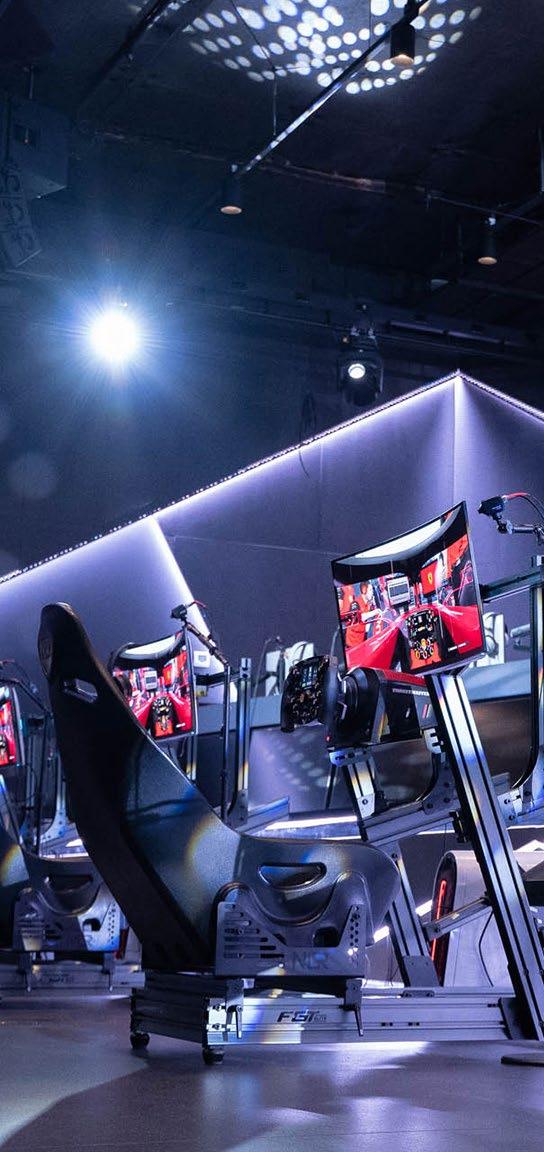
At Fortress Melbourne, every week is different in terms of games and tournaments. “Our cameras need to be flexible in how they can be used. As an example, aside from a typical stage setup, we have used our Marshall cameras to facilitate a wider, down-the-line shot of the team—where the audience is given the perspective of the side profile of the team for celebrations and so on,” said Stewart. “Additionally, we used four Marshall CV506 cameras recently in an F1 22 racing competition; we had four racing rigs to capture the best lap times on a track, and the cameras served as a way for the audience in-venue to see the participants as they raced as well as being fed into our replay system to provide instant replay of players’ reactions as they set new times.”
In an environment where live streams are required to display both gameplay and POV cameras side-by-side, it is key that the camera is synchronized to the gameplay as closely as possible. According to Stewart, “Many other possible solutions have limitations such as delay on output, limited number of outputs, and so on, but the Marshall cameras not only offer near-zero latency via SDI output but also provide additional outputs, such as an HDMI feed. This workflow provides exceptional capabilities for the live environment while also allowing the cameras to be used in a more casual setting with no additional labor needed for setup.”
The CV506 miniature full-HD camera utilizes a high-
performing 2.5-Megapixel sensor to capture crisp HD video streams starting at a wide-angle 85 degrees and up to 1,920-by-1,080p resolution at 60fps. A threaded miniature lens mount offers a wide range of prime and varifocal lens options, all which deliver detailed shots while maintaining an ultra-discreet miniature POV perspective. The CV506’s straightforward design and ease of use make it an affordable option for a wide variety of live broadcast applications including sports coverage, live music, auto racing, production, and more. The CV506 offers remote adjustment and match capability, allowing users to adjust color matrix, white balance, black balance, exposure, pedestal, and more from a distance using the Marshall RCP, Camera Control Software, and third-party controllers including Cyanview CCU, Skaarhoj, and others.
Stewart was also able to see the CV506s shine at one of Fortress Melbourne’s recent tournaments. “We just had a major esports tournament for the game GS:GO called ‘Fortress OCE Masters: A Blast Regional Qualifier,’” said Stewart. “The competition had four teams flying to Melbourne to participate and play on stage. The tournament was broadcast both locally and sent to a global channel where it was redistributed around the world. Our Marshall cameras got a heavy workout for this. Any time our observers switched perspectives on who was watching, so did the POV cameras that were positioned in the corner. This allowed the audience to see the face of the player who they were watching on screen. Once again, the CV506 excelled and was ideal for this application. We love our Marshall cameras.”
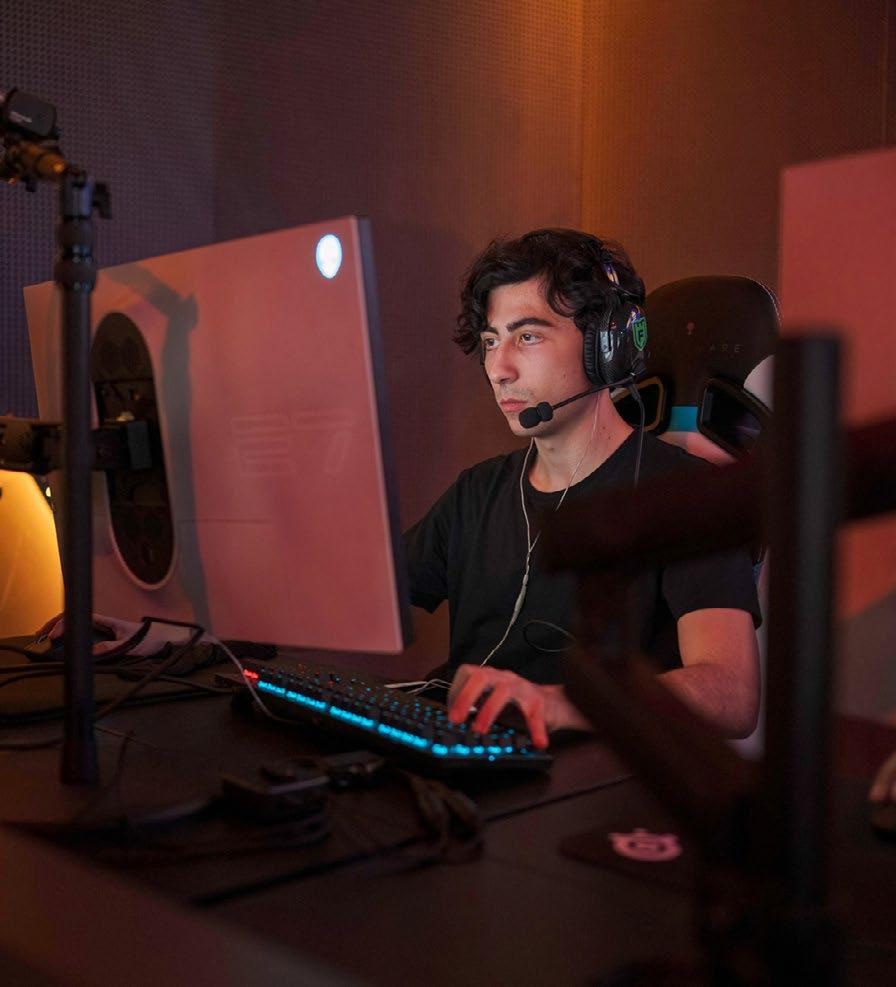
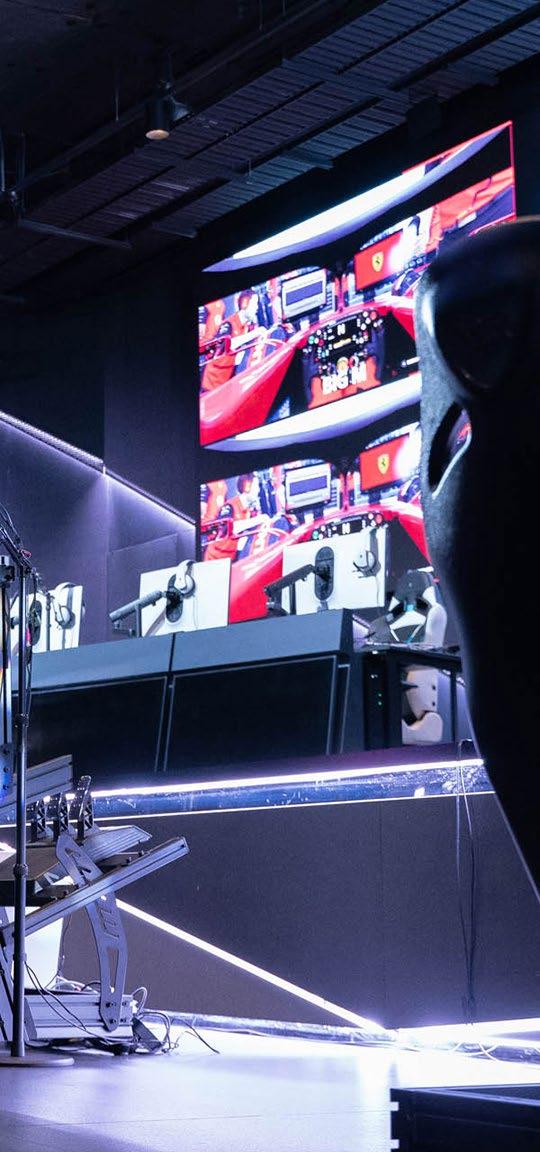
PRODUCTS THAT MATTER
PRODUCTS FOR THE COMPETITIVE EDGE
1 Draco HFR Extenders
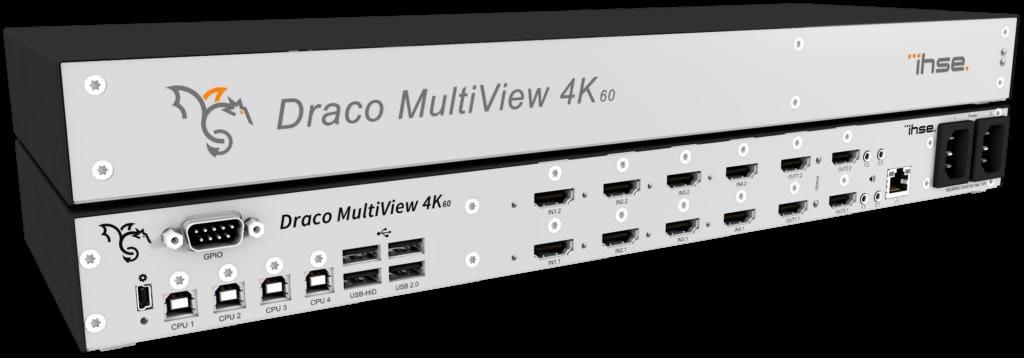
IHSE’s Draco HFR Extenders support transport of up to 240Hz while simultaneously supporting 60Hz. Video production must provide low latency and HFRs for gamers’ computers while producing audience previews in standard 1080p/60. IHSE solved the dualtransport problem with the introduction of Synchronized Sequential Frame Rate Conversion (SSFRC) technology, available in its Draco ultra series of DisplayPort and HDMI extenders. SSFRC technology combines HFR computer actions and broadcast transmission workflows into one extender system. Not only does this simplify the on-site infrastructure, but it also ensures that the same content is available everywhere at a pristine quality level that greatly enhances the impact of the event and the enjoyment of viewers.
ihseusa.com
2 4 Absen dvLED Products
Absen’s dvLED Products are HD ready for the streaming nature of esports. With a high refresh rate, high frame rate, and low latency for fast response, HD streams will come through effortlessly without considerable lag. High brightness and clarity, due to the wide color spectrum, also show the explosive action of the games. They also support flexible installation like hanging or ground support, for both indoor and outdoor installations.
usabsen.com
3 PT-RQ25KU Series Laser Projector
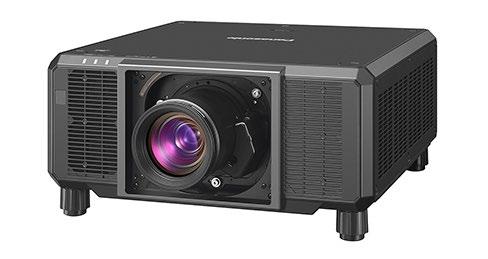
Panasonic’s PT-RQ25KU Series Laser Projector is the world’s smallest and lightest 20,000lm 3-Chip DLP 4K laser projector—ideal for live events, esports, concerts, and festivals, along with theme park and location-based entertainment attractions. With exceptional image quality and significant workflow advantages, the PT-RQ25KU Series is smaller and lighter than its predecessors, simplifying transport, storage, installation, and setup. It delivers up to 20,000lm of high brightness at 4K resolution, with over 20,000 hours of use. It’s also Intel Smart Display Module (SDM) ready so customers can integrate their preferred interface via compatible thirdparty modules.
na.panasonic.com
SEAMLESS Kitted Series dvLED Mounting Systems
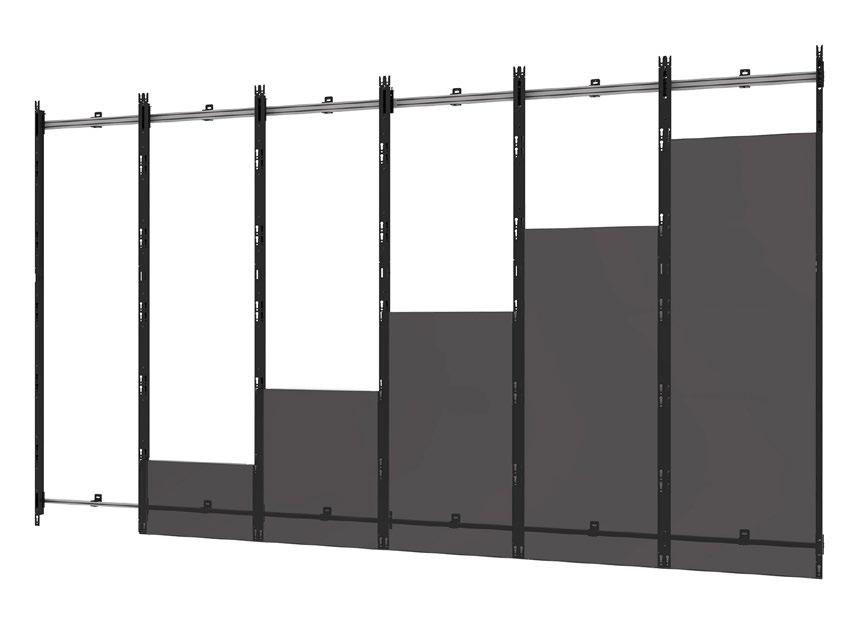
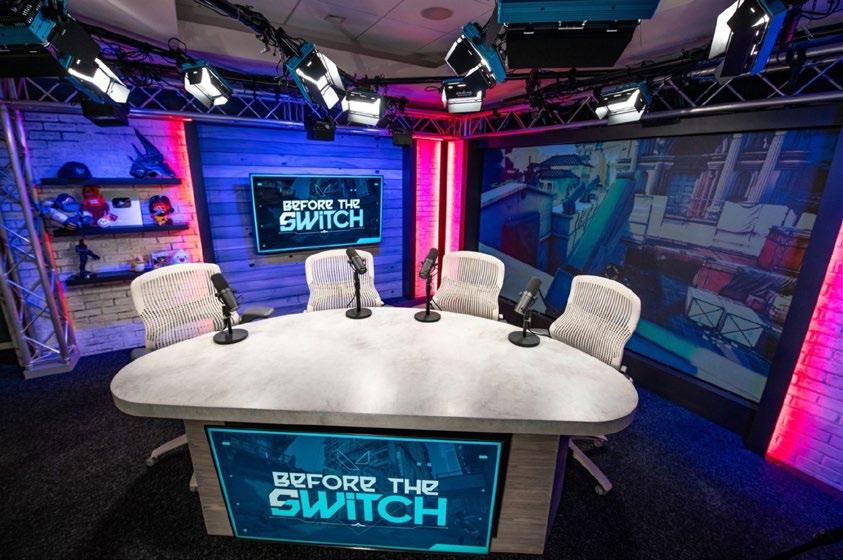
Peerless-AV’s SEAMLESS Kitted Series dvLED Mounting Systems offer a sleek, space-saving solution for any installation. With dedicated designs for a variety of brands, these mounting systems are the perfect solution no matter the dvLED display. Equipped with integrated cable management, easy-hang hardware, and a lightweight aluminum frame, video walls can be mounted quickly and easily with full support from these reliable mounts. Peerless-AV also offers full project support through the SEAMLESS Integration Program. The dvLED Solutions Team is there every step of the way to ensure each installation has start-to-finish product support and service.
peerless-av.com
5
OmniStream AV-over-IP Systems
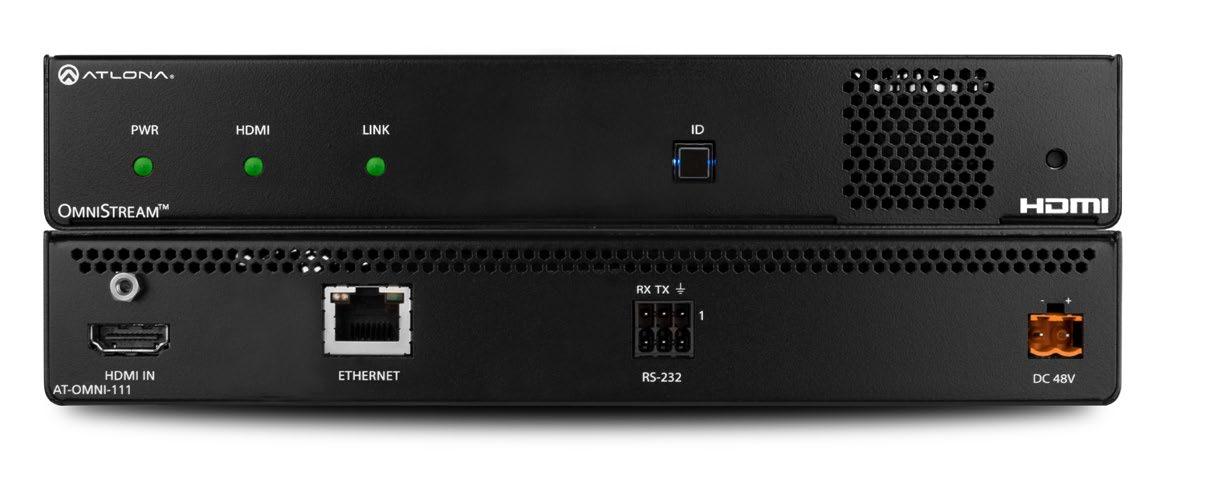
Atlona’s OmniStream AV-over-IP Systems are simple to set up and manage for everything from single classrooms and meeting spaces to entire corporate and education campuses. Most deployments start with OmniStream networked encoders and decoders, such as Atlona’s OmniStream 111 single-channel encoder and OmniStream 121 single-channel decoder. The OmniStream 111 supports HDMI sources up to UHD@60Hz and HDR, plus embedded audio and RS-232 pass-through. It features visually lossless video compression technology and achieves extremely low, sub-frame latency when paired with an OmniStream 121 decoder. OmniStream 121 benefits include simple scalability, audio de-embedding, and broadcast-quality 4K performance with visually lossless decoding.
atlona.com
6 Venue Pro VX Series
Planar’s Venue Pro VX Series is a family of indoor fine pixel pitch LED video wall displays delivering exceptional in-camera visual performance for virtual production (VP) and extended reality (XR), as well as on-camera visual performance for broadcasters. The series combines highperforming scan and refresh rates with high brightness and narrow pixel pitches. With support for HDR-ready content; a wide color gamut, including up to DCI-P3 color space; and compatibility with a wide range of cameras, the Planar Venue Pro VX Series delivers the unmatched visual performance and deployment versatility today’s companies need to develop lifelike recorded, streamed, or broadcasted video content.
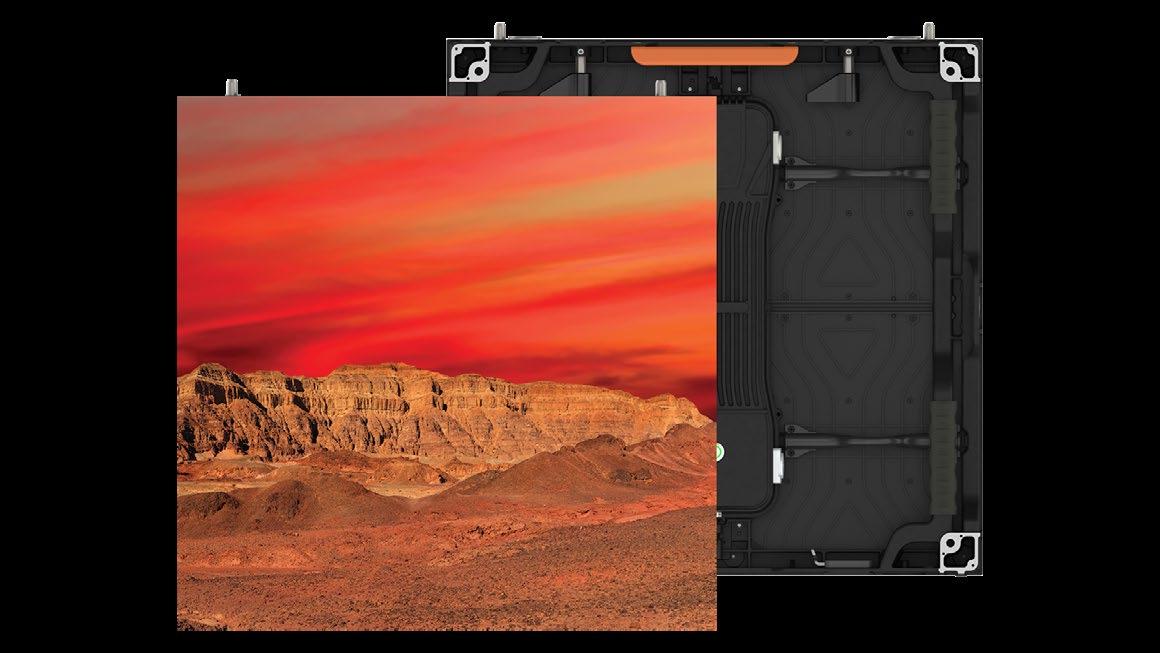
planar.com
7 DM NVX AV-over-IP Platform
Crestron’s DM NVX AV-over-IP Platform distribution delivers real-time images at a quality that is visually indistinguishable from the source. DM NVX is a standardsbased solution that creates an ecosystem of endpoints designed to work with your network and security protocols. DM NVX technology transports ultra high-definition 4K60 4:4:4 video over standard Gigabit Ethernet with no perceptible latency or loss of quality. DM NVX provides high quality and low latency in audio and video, providing an unparalleled gaming experience. Using standard network switches and CAT-5E UTP wiring, a DM NVX system delivers a high-performance virtual matrix routing solution that is economically advantageous and infinitely scalable for any 4K content distribution application.
crestron.com
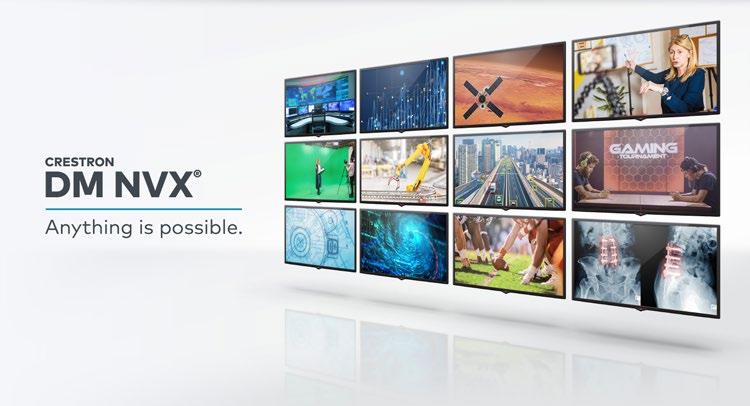
Sony Camera Solutions enable the most immersive esports experiences, whether recording is happening in the air or on the ground. The Airpeak drone and Alpha cameras capture the action from above, while the full-frame FX6 and FR7 Cinema line cameras give esports events the look of a feature film or documentary. The cinematic Super-35mm HDC-F5500 camera powers the biggest sports and entertainment events around the world. Additionally, Sony’s professional BRAVIA displays and powerful projectors are used in esports arenas and training facilities.
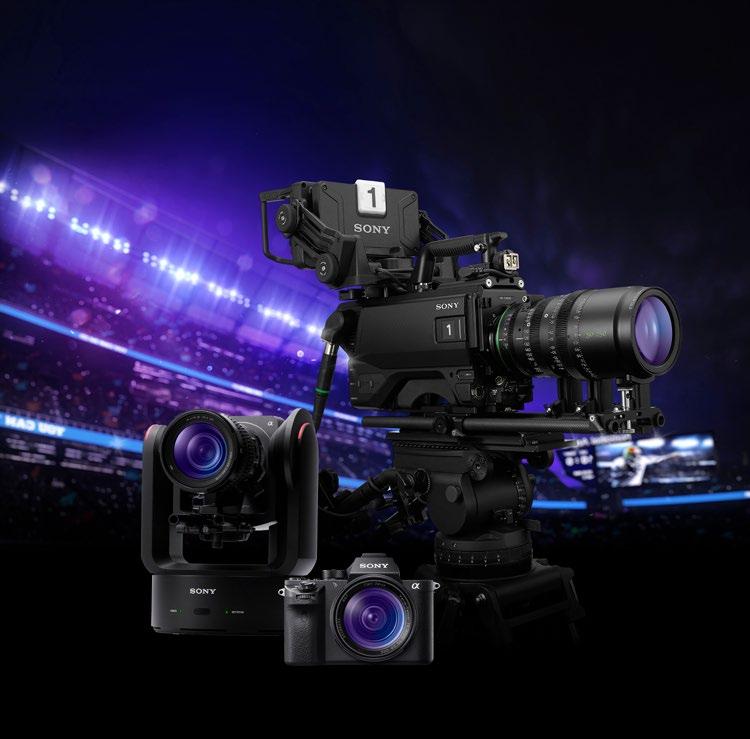
pro.sony
The ViewSonic XG2431 Gaming Monitor is designed with technologies that most benefit esports. With a native 240Hz refresh rate and final panel tuning completed by the display wizards at Blur Busters, clear and crisp gaming imagery flash by every 4.2ms. This 4.2ms measurement represents the time that any one frame is shown—the theoretical minimum for athlete-to-game response time, as the viewer needs two frames to compare against to see any motion. At this level, the movement of the athletes’ hand and cursor feels indivisible, becoming an extension of their hand and melting away the space between the athlete and the game. viewsonic.com
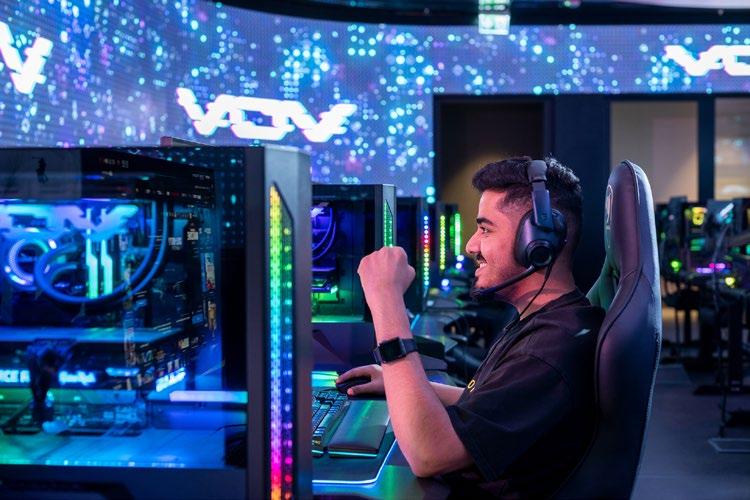
Daktronics’ LED Technology delivers in esports venues and gaming locations— suitable for up-close viewing ranging from 2.5mm down to 0.7mm pixel spacings. While Daktronics’ products have long been thought of as the large outdoor screens at sports stadiums and in OOH applications, the company also offers the perfect solution for indoor video wall applications. These provide the high-resolution imagery everyone expects to see at today’s event venues, with processing speeds that will easily keep up with the gaming world’s fast-paced action.
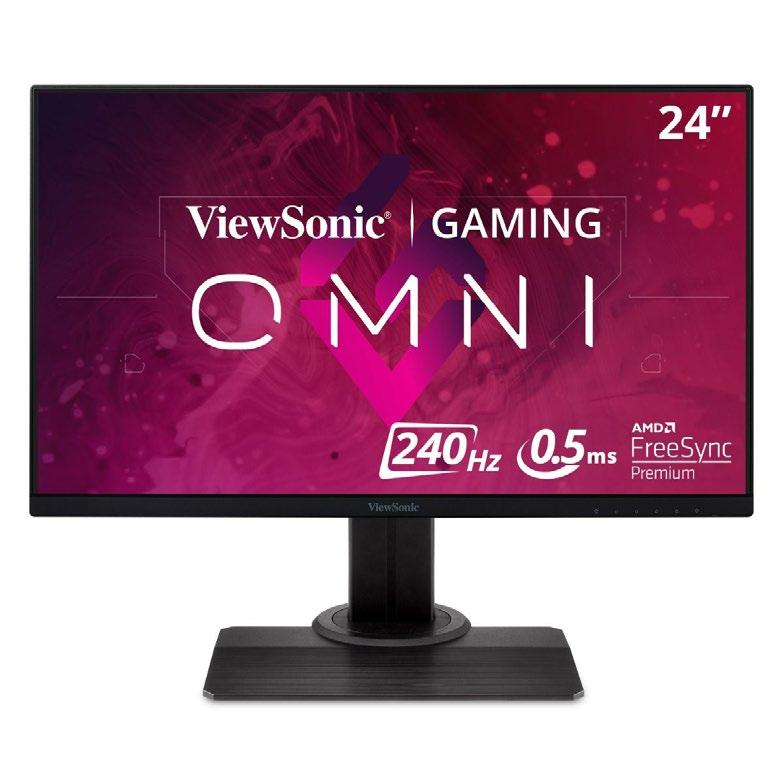
DVP500x-4U Modular Video Processor and Presentation Matrix
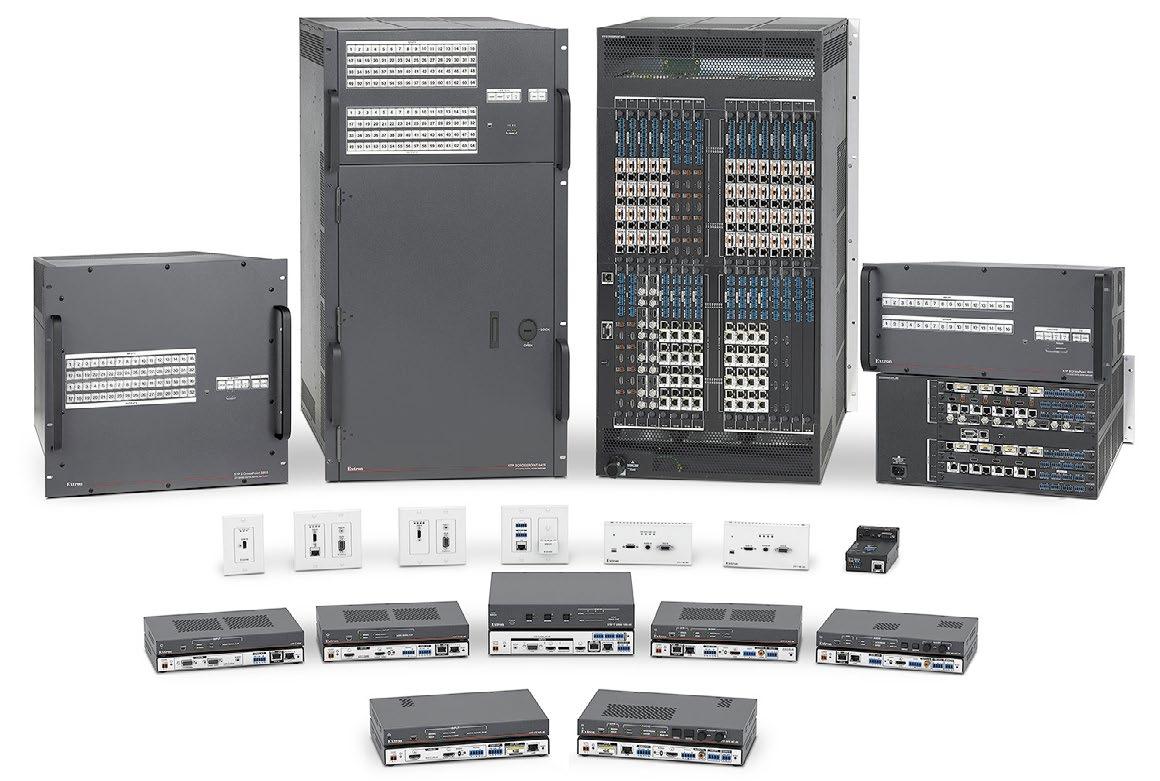
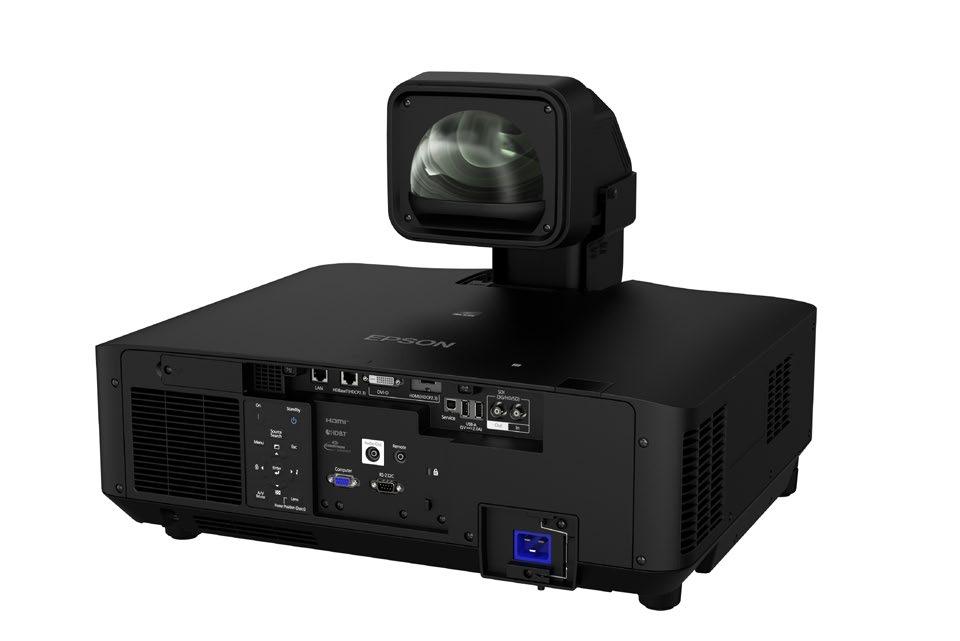
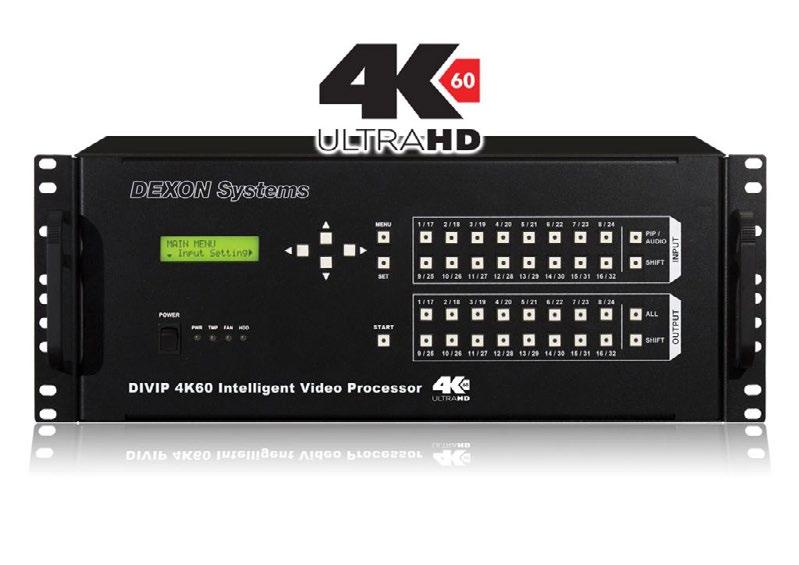
Dexon USA’s DVP500x-4U Modular Video Processor and Presentation Matrix has the ability to provide stable 4K60 RGB or YUV 4:4:4 visualization in a single box. Its non-scaling outputs offer zero latency on matrix switching, while scalable outputs support ultra-low latency windowing video processing on 4K60 HDMI 2.0 in the same chassis. Equipped with HDBaseT technology, the DVP500x-4U ensures long-range signal extension at the highest frame rate and image quality, making it an ideal solution for any esports application that is easily configurable with its intuitive software.
dexonusa.com
EB-PU2220B
Large-Venue Laser Projector
Epson’s EB-PU2220B Large Venue Laser Projector is the world’s smallest and lightest 20,000-lumen projector, providing highdefinition, ultra-bright images and full-HD WUXGA resolution with 4K Enhancement, ideal for immersive esports content. Engineered for reliability and flexibility, it is optimized for live events with 3G-SDI input and output to accommodate daisy-chaining and long cable runs. A mechanical shutter protects the projector during laser light shows and it uses a 20,000-hour, virtually maintenance-free laser light source, as well as a hermetically sealed optical engine for high dust resistance and a filterless cabinet for low-maintenance operation. Paired with Epson’s optional PixAlign camera for streamlined multi-projector setups, the EBPU2220B offers a versatile display solution for esports venues.
epson.com
XTP Systems
Extron’s XTP Systems are ideal for permanent and staged esports venues. XTP is a complete AV distribution platform with unmatched performance and powerful integration features that streamline system design and installation. It offers fully integrated switching and distribution for digital video and audio, supporting local AV connectivity as well as remote devices over shielded CATx and fiber optic cable. The scalable XTP II CrossPoint Series modular matrix switchers feature a 50Gbps digital backplane and support uncompressed 8K switching. While the esports installation evolves and grows, a wide variety of XTP I/O boards can be added into the existing frame.
extron.com
KY-PZ510 Series PTZ Cameras
JVC Professional’s KY-PZ510 Series PTZ Cameras feature ultra-clear 4K60P HEVC streaming with SRT encoding technology to reduce latency and provide superior image quality. The award-winning series comprises the KY-PZ510, in black and white, as well as the KY-PZ510N with NDI 5 support. The new cameras offer an extended focal length (21.8 to 261.8mm) and enhanced SMART autotracking, which can be set to automatically select or follow one person among multiple from within its super-wide (80-degree) field of view. The incorporated Vertical Interval Time Code (VITC) with Network Time Protocol (NTP) provides the PTZs with multicamera synchronization for seamless live event production. pro.jvc.com
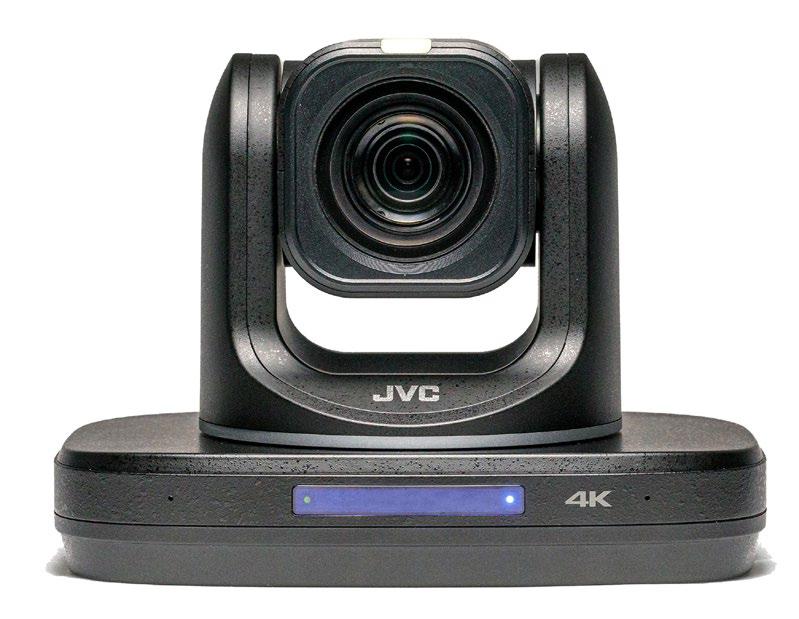
Listen EVERYWHERE
Listen Technologies’ Listen EVERYWHERE streams audio over a Wi-Fi network, allowing listeners to use their own smart devices to hear live or recorded venue audio clearly despite hearing loss, noise, or distance. Listen EVERYWHERE works on an existing or separate wireless network. Venue operators can customize the Listen EVERYWHERE app with welcome messages/ads and logos. To access Listen EVERYWHERE for assistive listening, guests download the free Listen EVERYWHERE app on their smartphone, select their preferred venue audio channel, and hear audio in headphones or earbuds via their devices. They can also stream sound directly from their smart device to Bluetooth-enabled headphones or hearing aids.
listentech.com
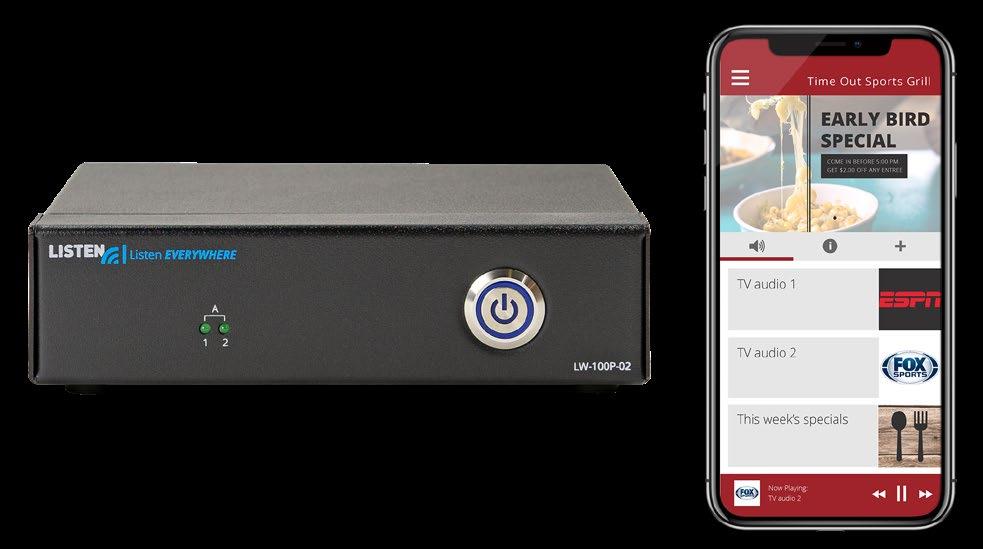
CV420e 4K60 ePTZ Camera
Marshall Electronics’ CV420e 4K60 ePTZ Camera, designed into a compact body, provides optimal features for esports and sports broadcast applications. Spectators can view crystal clear video images thanks to the camera’s 9.5-Megapixel 4K sensor, capable of 4K (UHD) resolution up to 60fps with ultra-clean HD resolutions from an ultra-wide 100-degree AOV with no distortion. The CV420e’s digital pan, tilt, and zoom functions boast more than 250 presets that are savable and selectable from any number of command sources, as well as flexible HDMI and USB3.0 outputs or IP (Ethernet) I/O connection with one Cat (Ethernet) cable.
marshall-usa.com
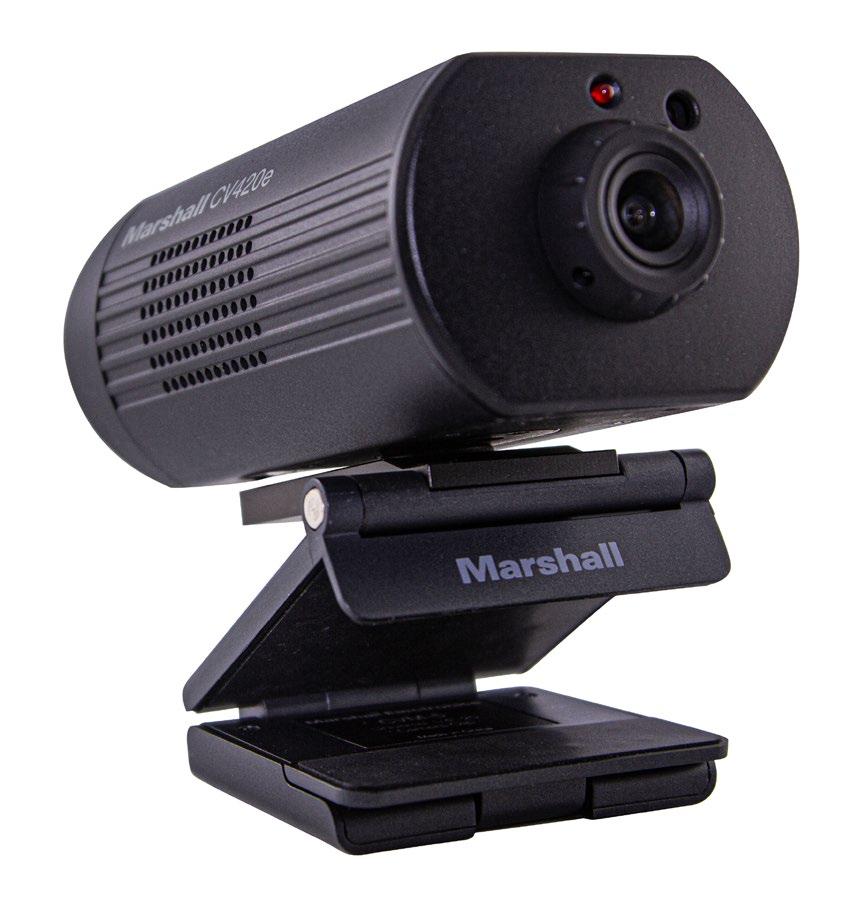
NEXSYS
Middle Atlantic’s NEXSYS combines power distribution and power backup into a comprehensive and cohesive product platform, united by design—both internal and external—making it the easiest choice when specifying or buying power products that keep the game going.
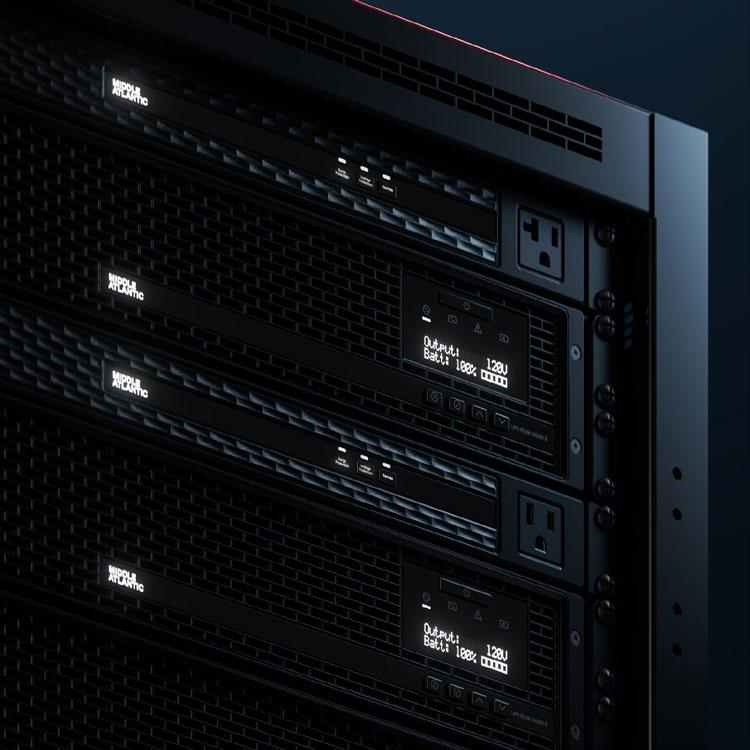
Designing a power platform with both PDUs and UPSs that have a consistent look and are built with the highest-quality components for the finickiest of gaming gear gives you the confidence to Just Choose NEXSYS.
In fact, at a minimum, every NEXSYS product has surge protection, voltage protection, communications via dry contacts, and a 15- and 20-Amp companion!
legrandav.com
ATEM
Constellation HD
Blackmagic Design’s ATEM Constellation HD live production switchers include a 1-M/E model with 10x 3G-SDI inputs, 2-M/E model with 20x 3G-SDI inputs, and a 4-M/E model with 40x 3G-SDI inputs. All models include full standards conversion on every SDI input, allowing users to handle sources in multiple formats, as well as four ATEM advanced chroma keyers per M/E row, allowing users to blend studio elements into a virtual environment. They also feature a DVE per M/E row, built in multiview, media players, a large media pool, and more.

blackmagicdesign.com
ATEN Technology’s VE1843 Transceiver, designed with HDBaseT 3.0 technology, extends True 4K uncompressed signals up to 100m over a single (HDBaseTcertified) CAT-6A cable with zero latency, and transmits IR, RS-232, Ethernet, independent audio, and USB signals with the latest HDBaseT standards. For stable HDMI signal transmission, the VE1843 supports HDCP 2.3, 3D, Deep Color, HDR/ HDR+, and Dolby Vision. In addition, the VE1843 is equipped with HDMI audio embedding/de-embedding functions for suitable audio/video combinations based on different environments. To ensure non-stop operations, the fanless fin heat sink design prevents overheating and thus elevates reliability.
aten.com
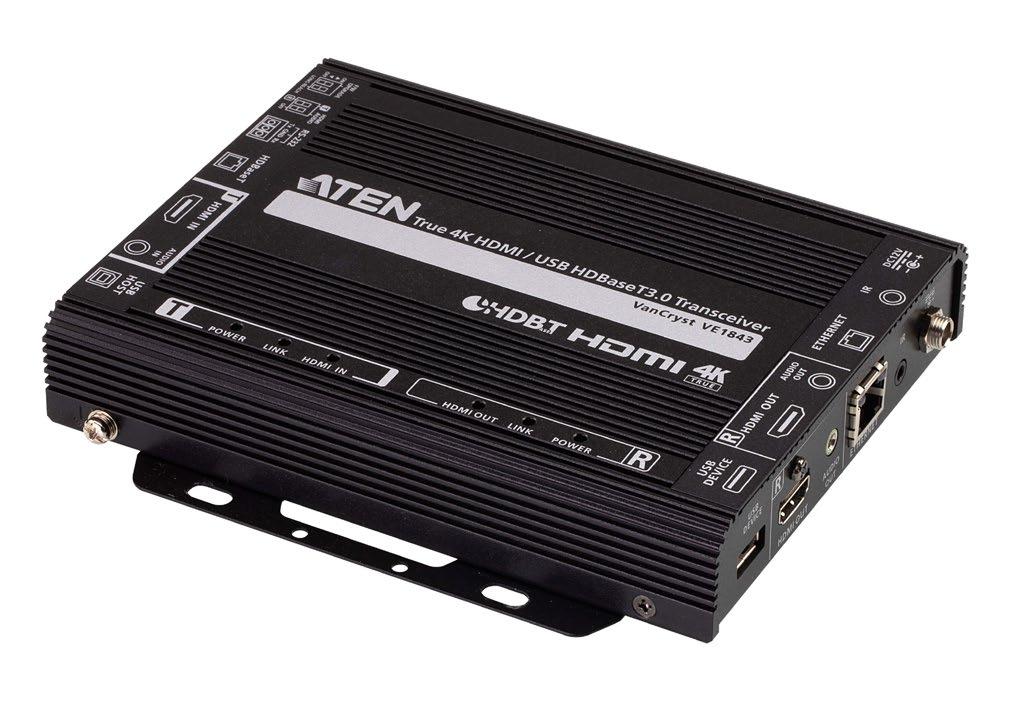
TRx Video Management Software
VuWall’s TRx Video Management Software delivers an easy way to ensure the best possible fan experience for esports venues equipped with video walls or large displays for spectator viewing. TRx is used to distribute virtually any source to any display with easy drag-and-drop operations and without any programming, thereby easily displaying multiple side-by-side athletes’ games on any screen, in any size or layout, ad-hoc, with a click of a button or drag of the mouse. TRx brings advanced video wall and KVM features, including Multiview, with SDVoE technology, making it ideal for esports where high-quality, zero-latency video is paramount.
vuwall.com
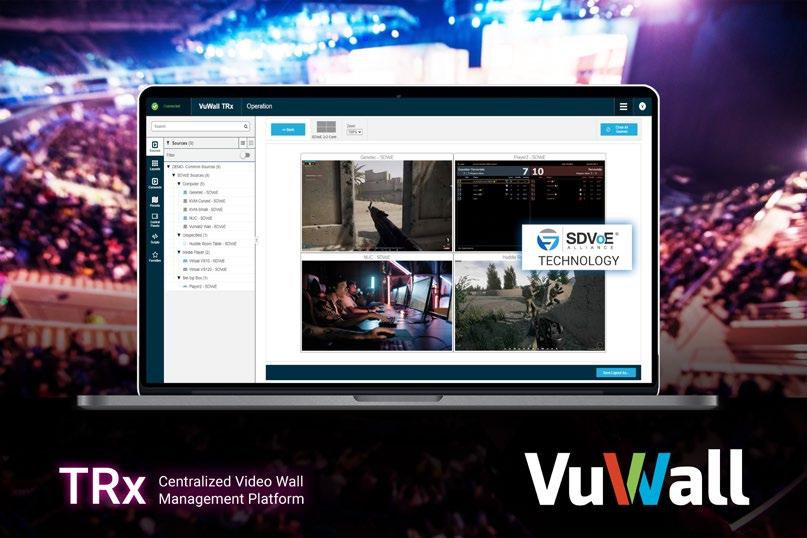
Studio Pro
PTZOptics’ Studio Pro is a complete content creation solution: a 1080p, 60fps camera with a built-in noise-canceling mic array and included LED lighting panel. Its 12x optical zoom lens, 16x digital zoom, and a 72.5-degree FoV are perfect for capturing crisp macro shots, and the portrait/ landscape hardware toggle switch makes it easy to properly frame content for any platform. The Studio Pro’s advanced timeof-flight sensor allows users to rapidly shift focus, track fast-moving subjects, and achieve bokeh effects. With simultaneous HDMI, USB, and IP outputs; native NDI|HX; and USB, 12VDC, or PoE power, Studio Pro fits into any streaming setup.
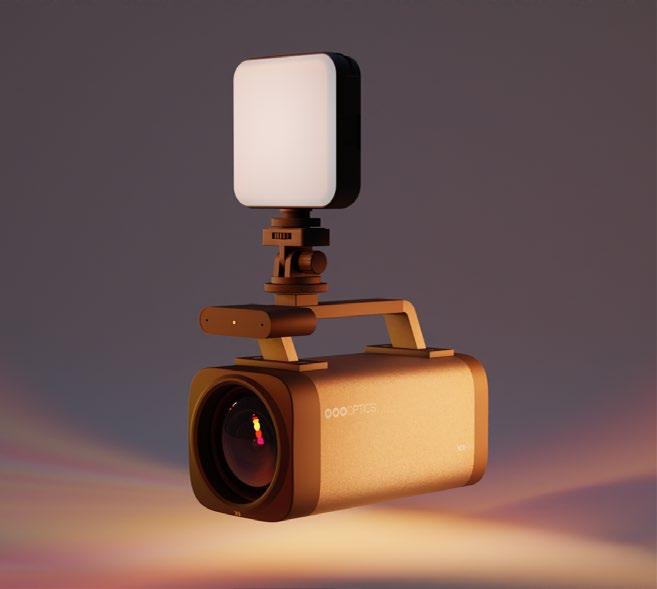
ptzoptics.com
Focus Point FP6030-II Speaker
SoundTube’s Focus Point FP6030-II Speaker features patented Dual-Parabolic dispersion control technology with a targeted 45-degree audio footprint and true stereo separation. This technology permits specific audio to be clearly heard within the defined space.
Twin one-inch, concave, high-excursion aluminum drivers deliver stereo/mono music and messaging while the patented ZeroReflection enclosure technology ensures accurate sound reproduction. The FP6030-II ships with a clear dome, hanging bracket, sound sleeves, mounting bushing, rigid mount adapter, and a 15-foot hanging cable. Motion sensing and LED lighting modules along with transformers/ junction boxes for 25-, 70.7-, and 100-volt applications are available.
soundtube.mseaudio.com
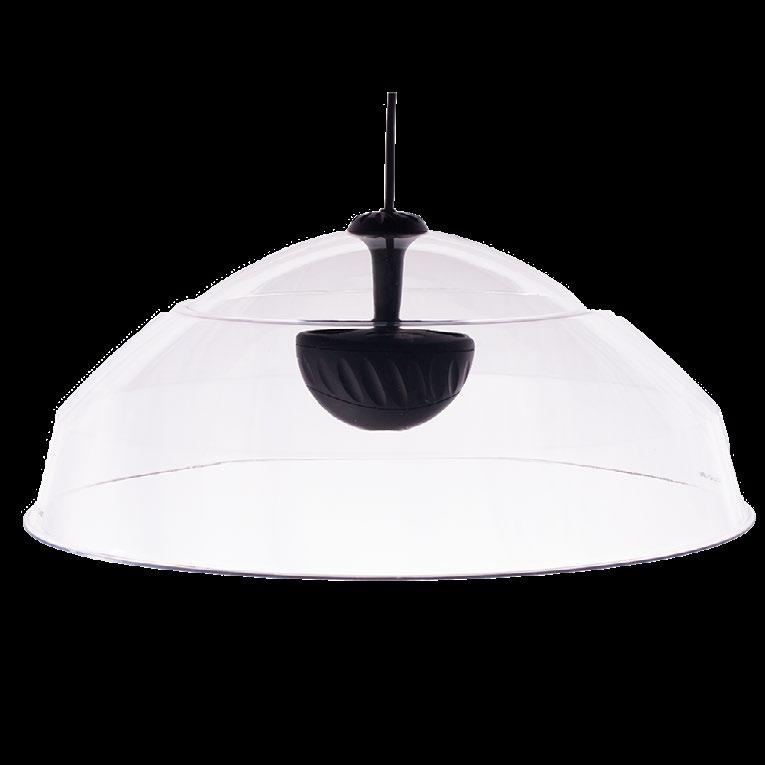
CAPT4K1
Vanco’s CAPT4K1 is a professional-quality capture solution, ideal for embedding gameplay into live or recorded video productions. The CAPT4K1 supports uncompressed HDMI input resolutions up to 4K@60Hz with HDR10 compatibility, with HDMI loop-out and HDR pass-through to display every pixel on a local or main display. Captured 4K source signals are automatically converted to 1080p—ideal for streaming. The CAPT4K1 is compatible with all major third-party video production applications, including OBS and VLC. It includes a mic input for microphone/audio source mixing and embedding, as well as a headphone jack for a headset or audio breakout.
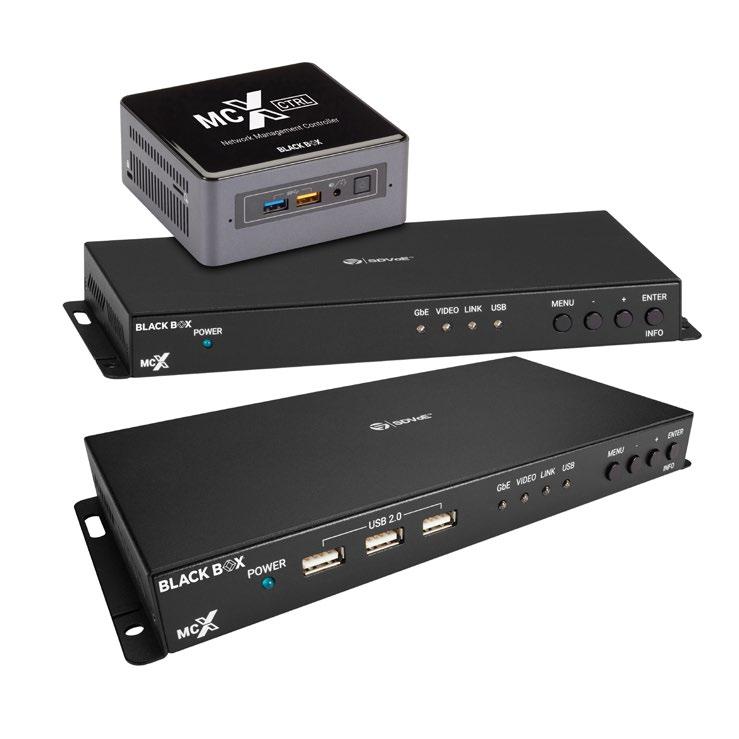
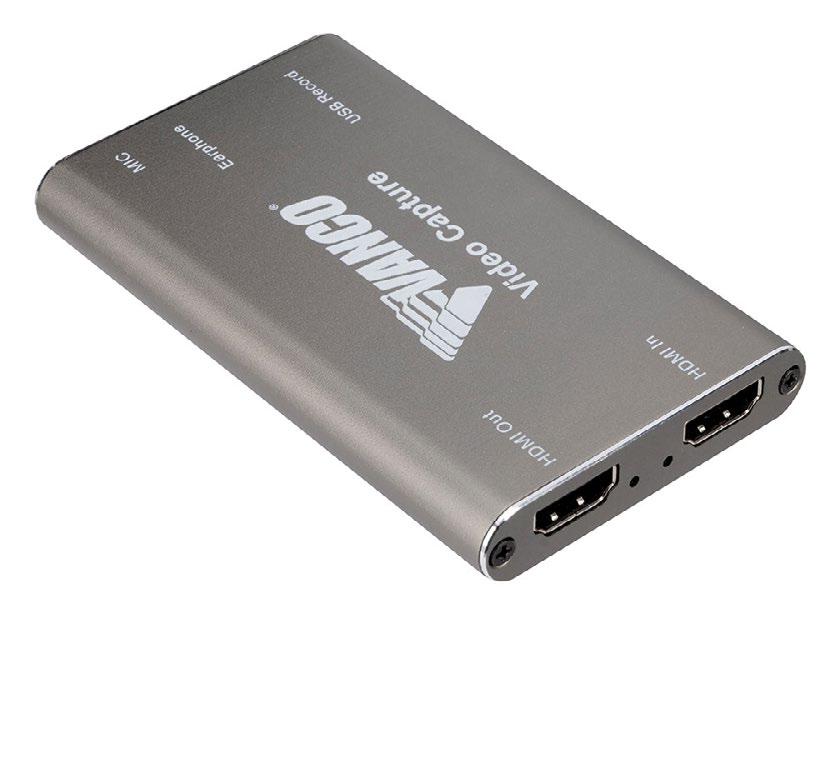
vanco1.com
MCX AV Distribution and Management System
Black Box’s MCX AV Distribution and Management System delivers the video quality high-end AV applications require to display eye-catching content: It extends up to 4K60Hz 4:4:4 video to an unlimited number of displays without sacrificing latency, video quality, or bandwidth. Add ControlBridge to enable operators to trigger MCX and control room systems via an intuitive touch panel GUI or even mobile devices—the perfect combination for quick, zero-lag, high-quality egaming.
blackbox.com
PRIME VSAR
Chryon’s PRIME VSAR merges the cuttingedge graphics of Epic Games’ Unreal Engine with Chyron’s built-for-broadcast design, editorial, and live production capabilities. With their 3D modeling software of choice, designers can create fantastical virtual sets with stunning photorealism or add lifelike augmented reality elements to productions in live event spaces. With custom control panel capability, PRIME VSAR makes management of complex virtual elements accessible to virtually any member of your team. Recently, PRIME VSAR served as the engine behind the ATT Annihilator Cup’s sky-high virtual set (built by OS Studios), where hosts and guest commentators provided coverage for a month-long esports tournament.
chryon.com
